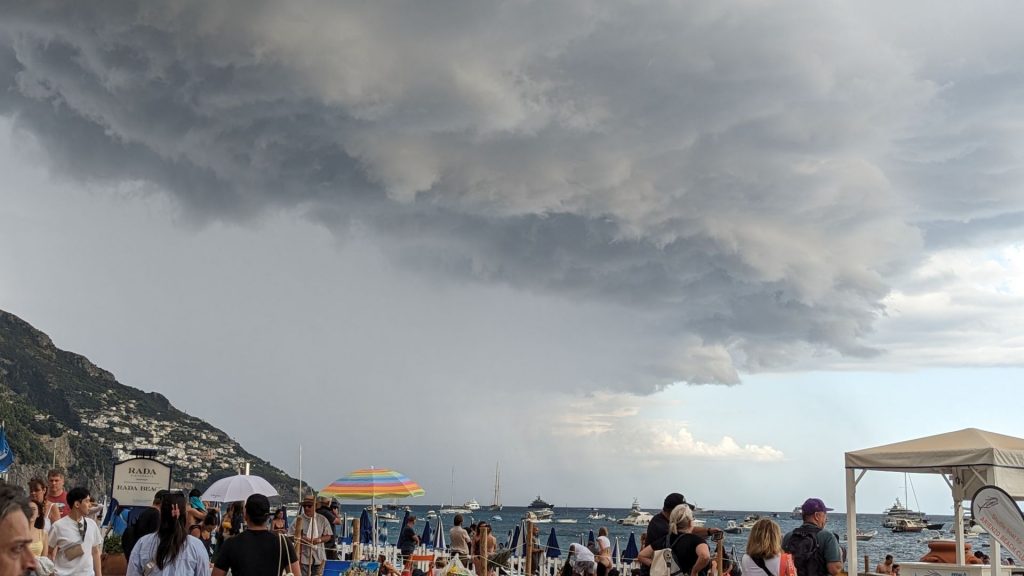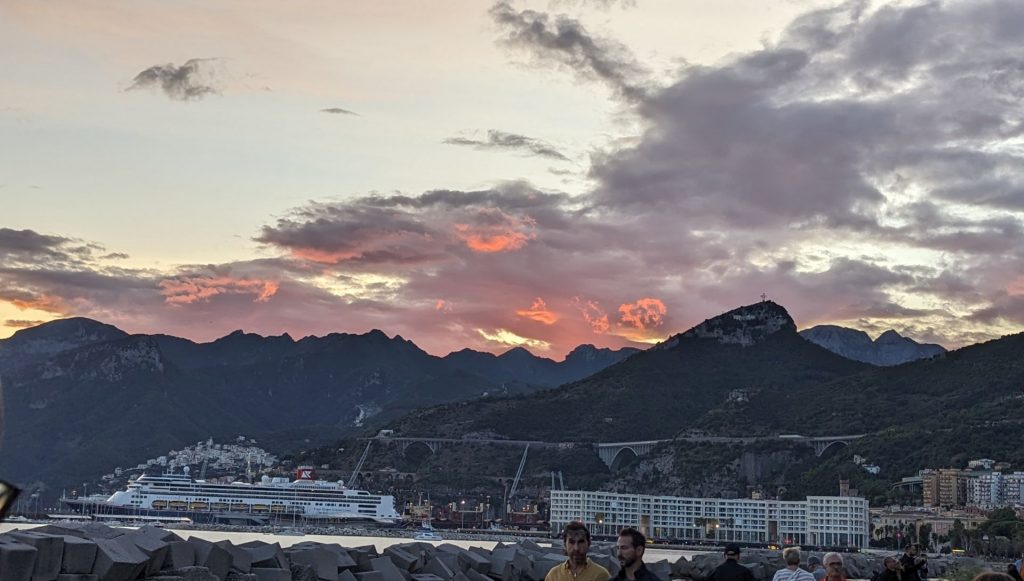We stayed on the boat on the 23rd because it poured rain much of the day. It made for some fun pictures, though.
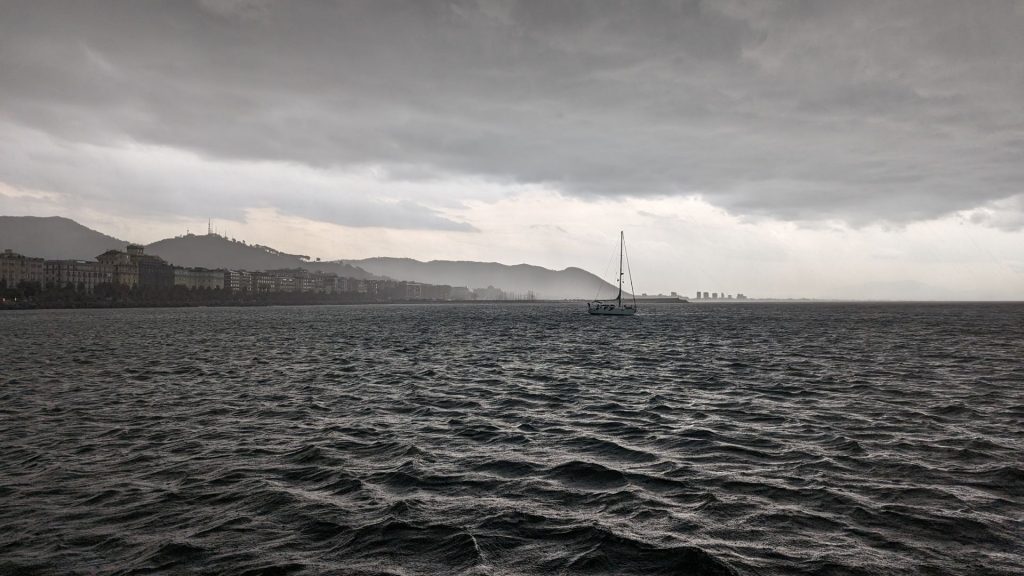
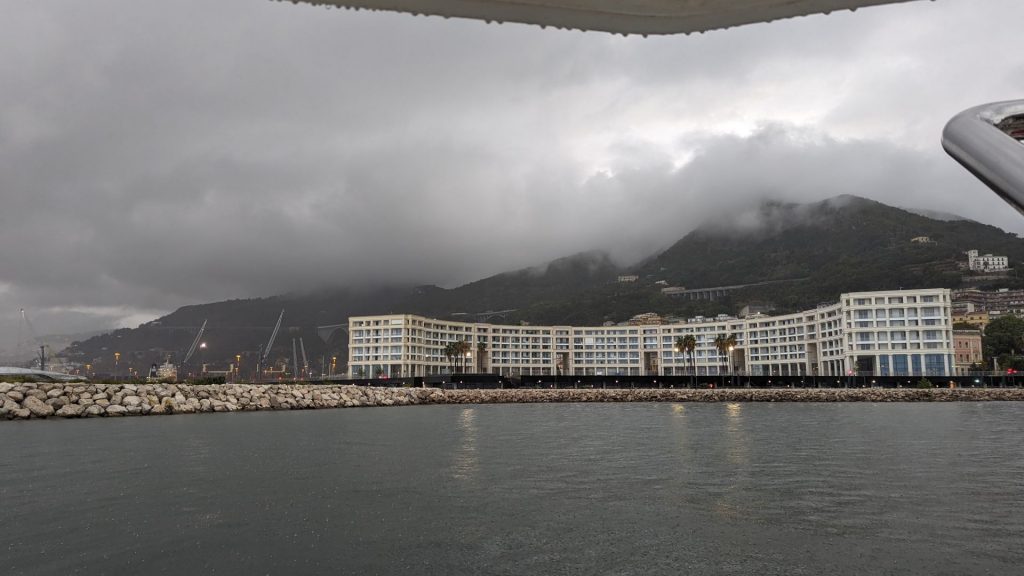
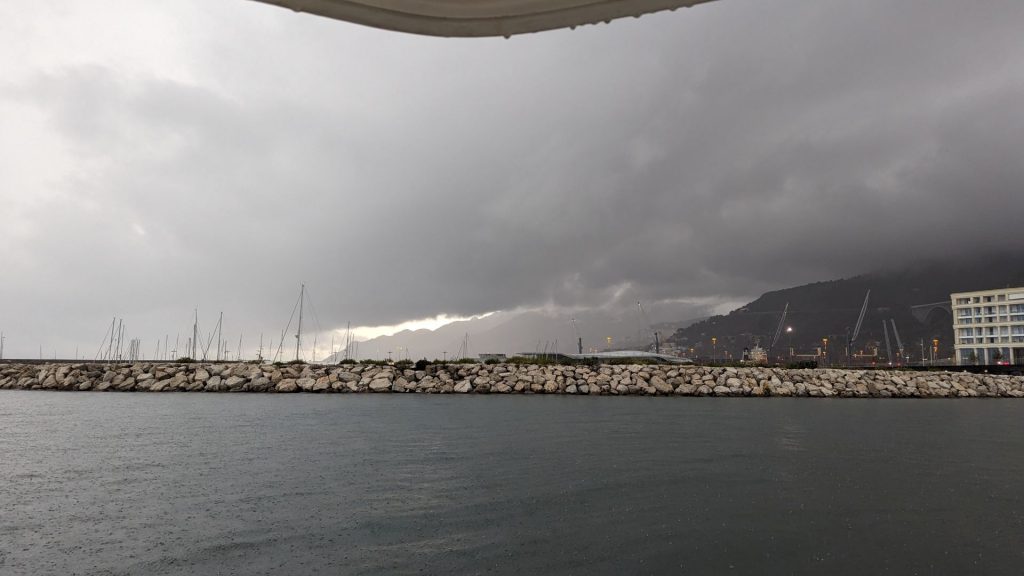
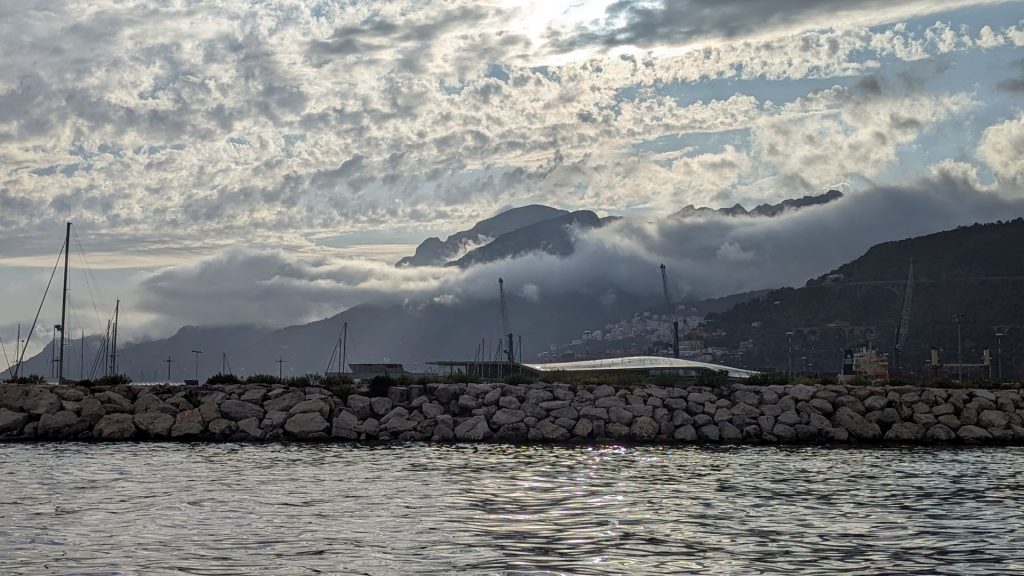
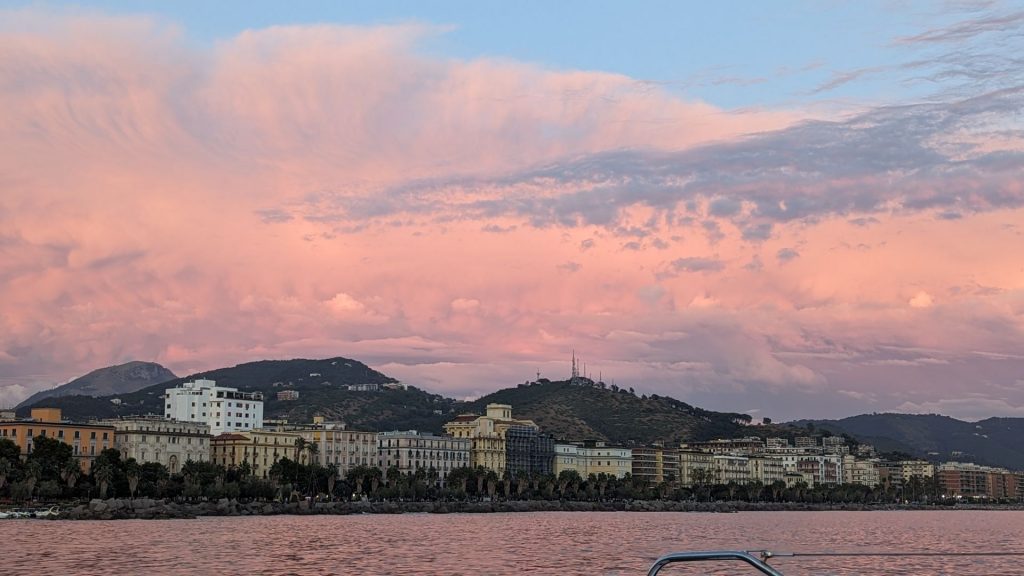
We were ready and raring to go to Positano the next day. This time, we took the dinghy to the marina and left it by a small quay. The gentlemen who worked there had graciously allowed us to do this before so we gave them a couple of bars of Swiss chocolate as a show of thanks. They seemed to appreciate it. Everyone likes chocolate, yes?
We went further down the Amalfi coast than we had before, so we saw some new coastline. Here are some pictures, although I cannot guarantee that all are of the new coastline, to be perfectly honest. I always take a lot of pictures. But first, here are two pictures of the promenade we take to get to the ferry:
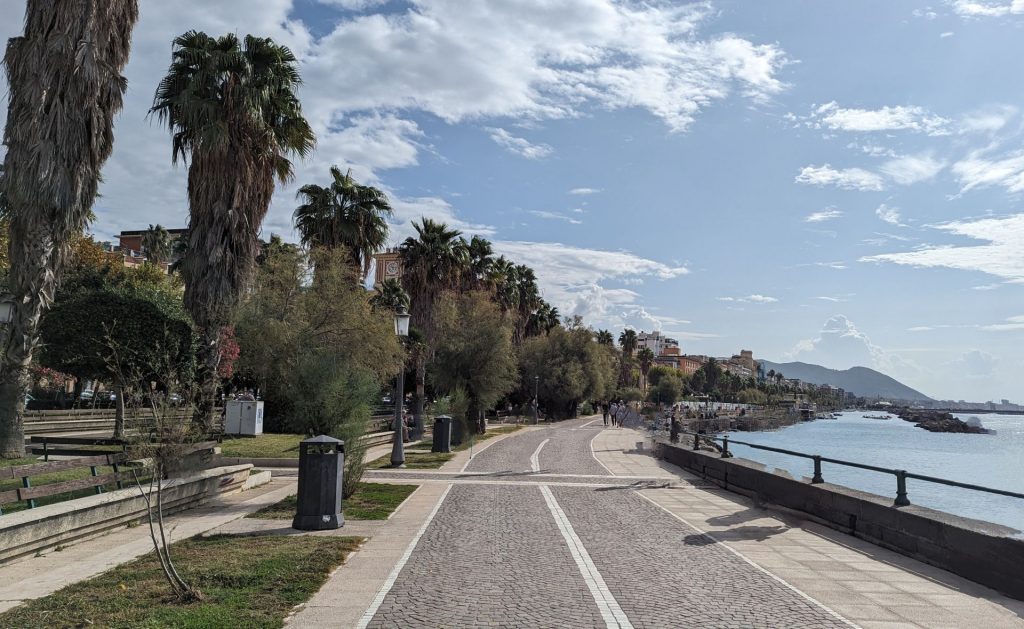
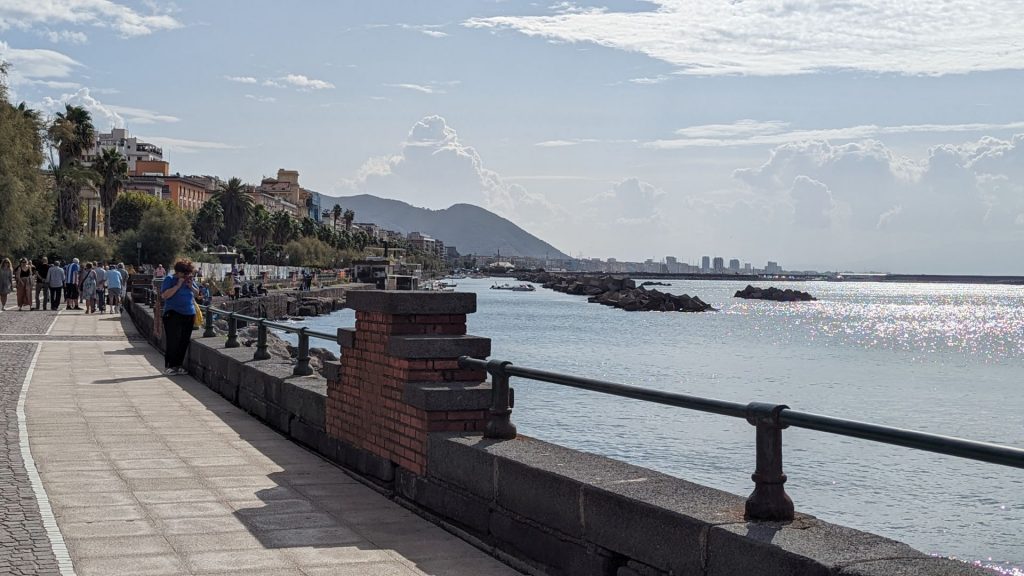
And now, the coastline . . .
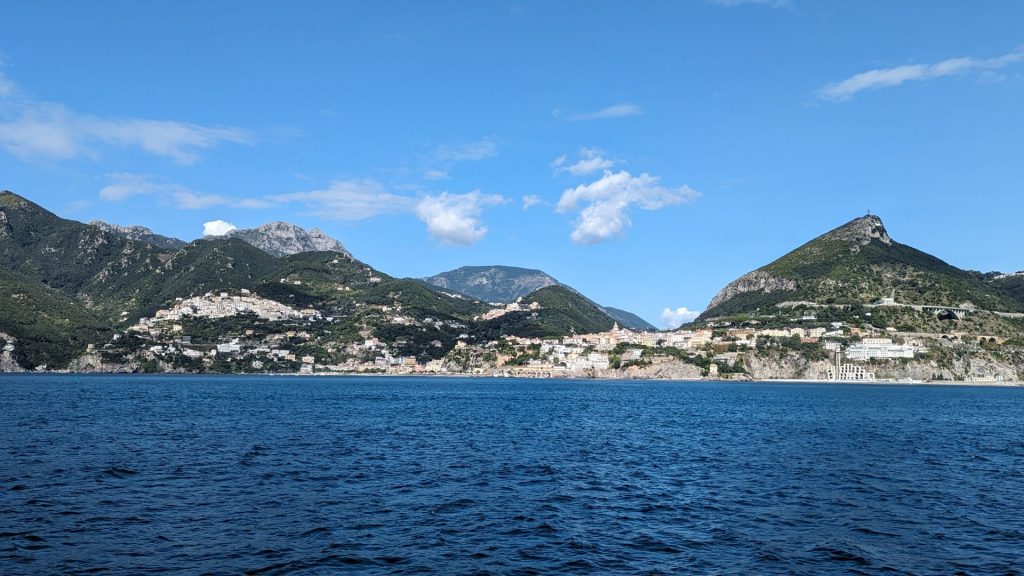
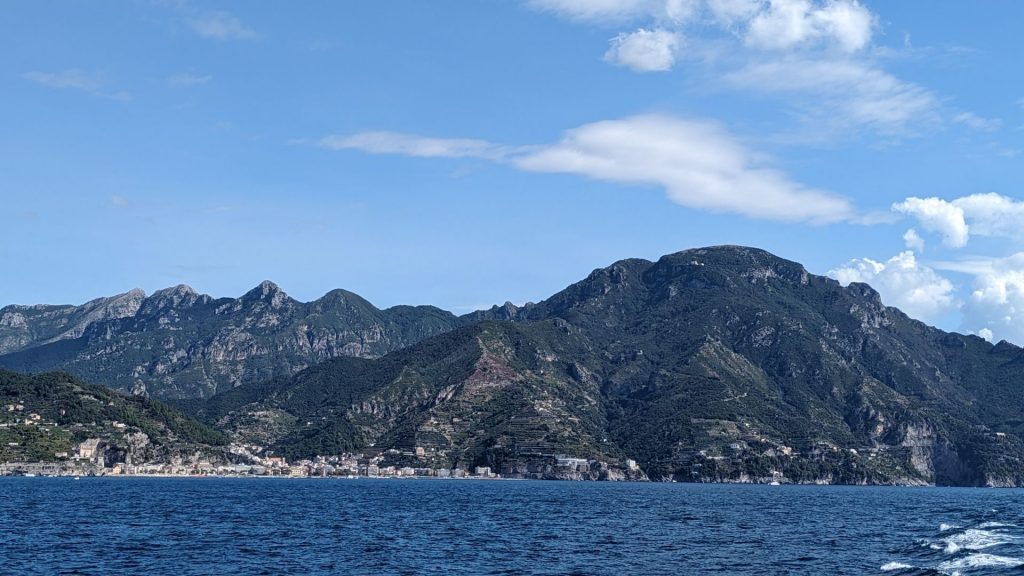
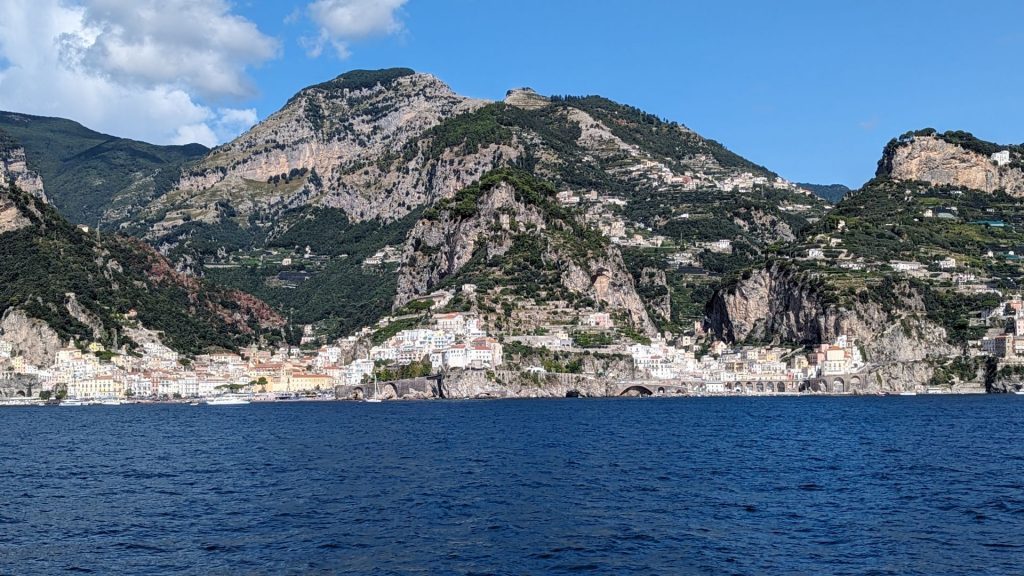
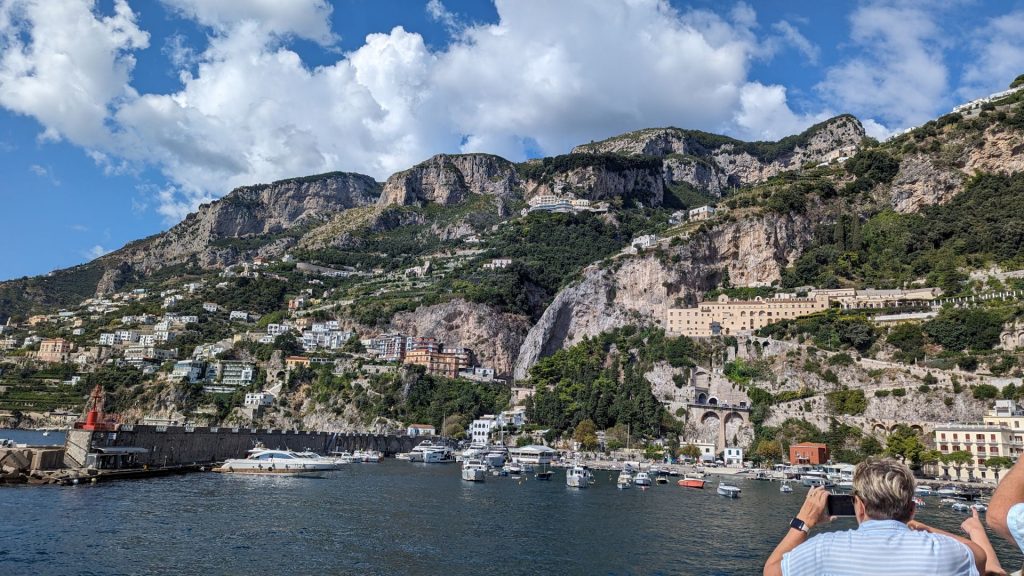
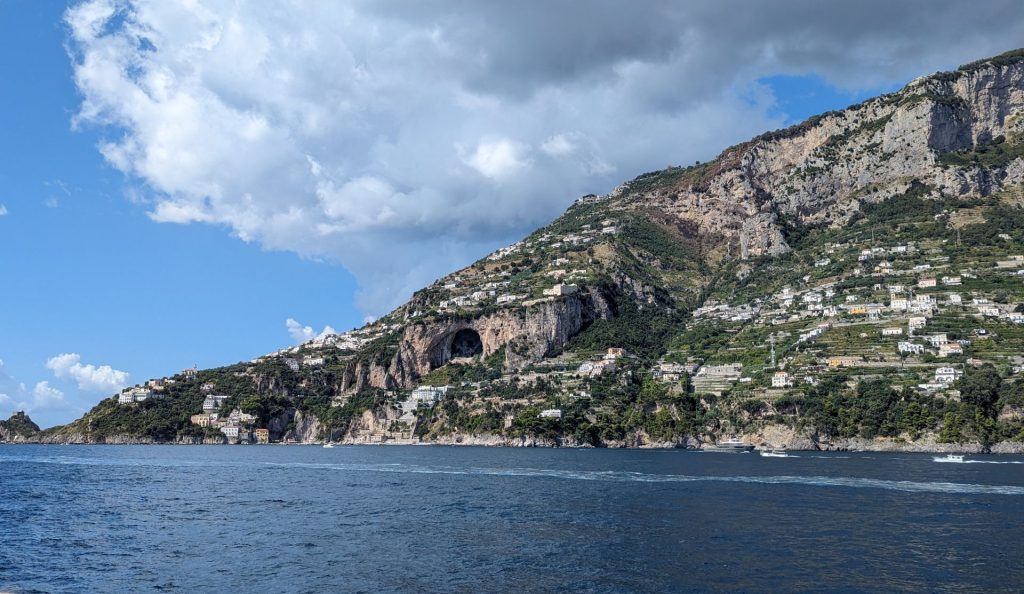
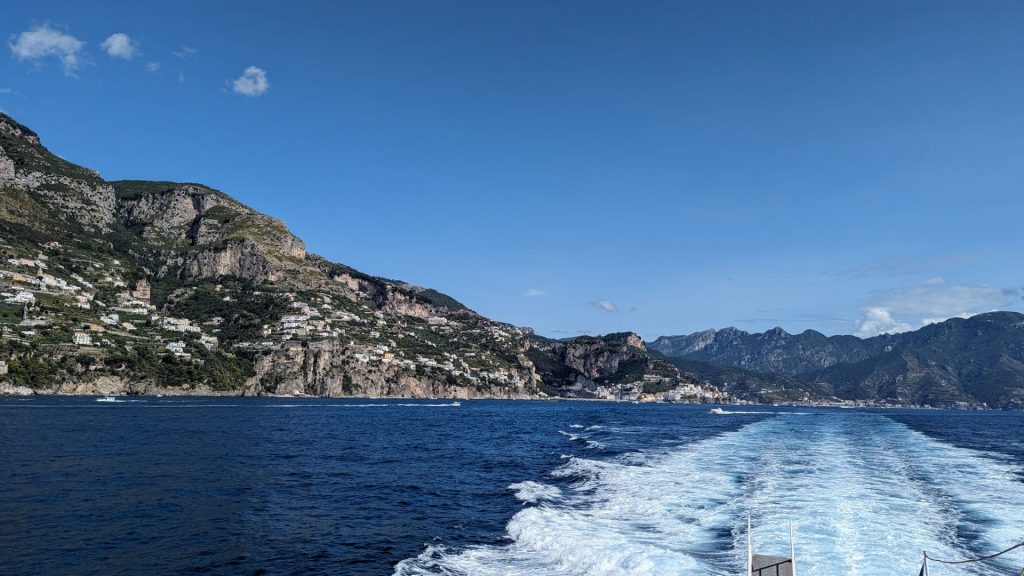
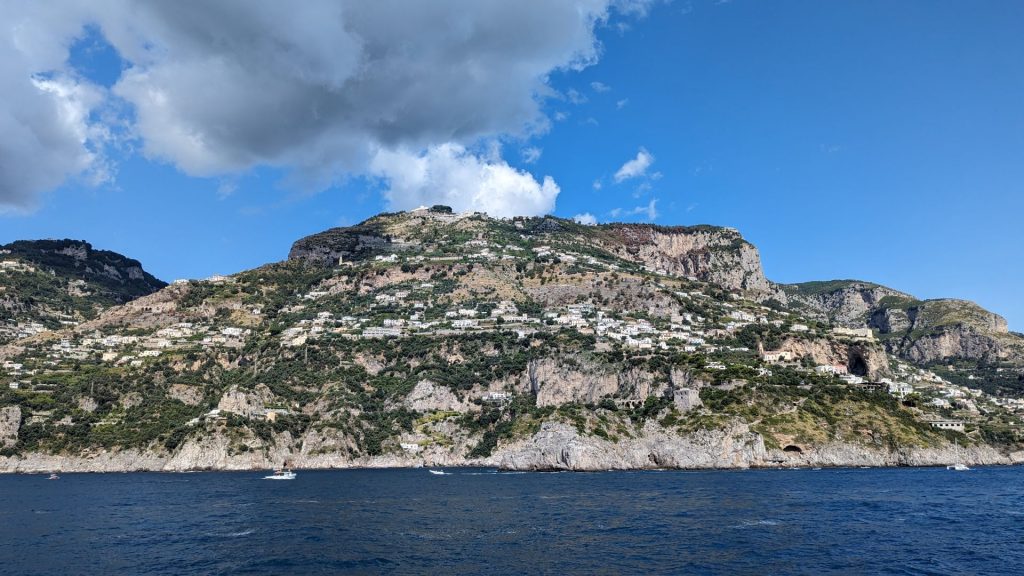
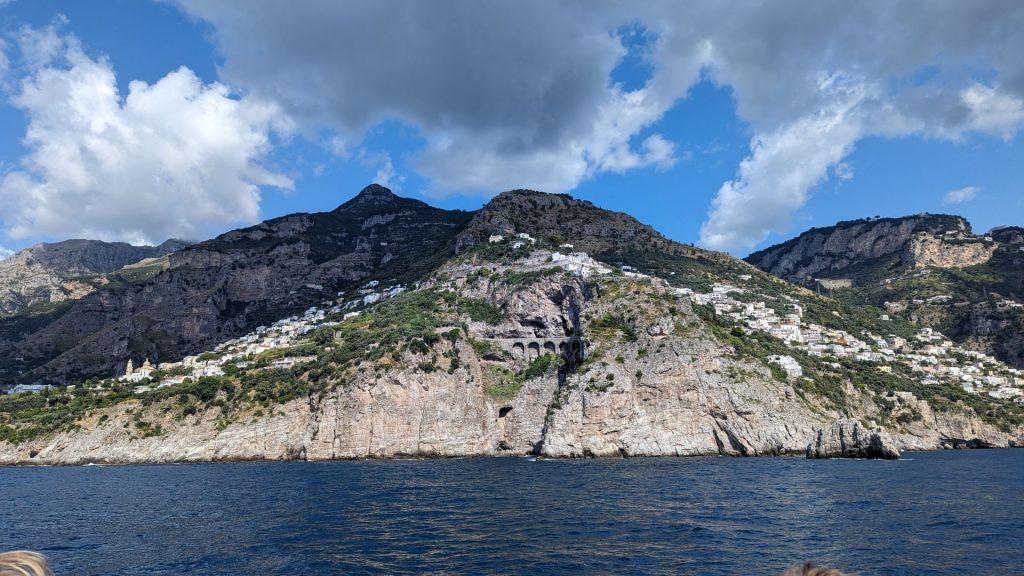
The following picture deserves its own space so you can see the stairway down to the beach. I wonder how many people go up and down several times a day! 🙂 I zoomed in so it is actually a bit distorted because of that. But you get the gist.
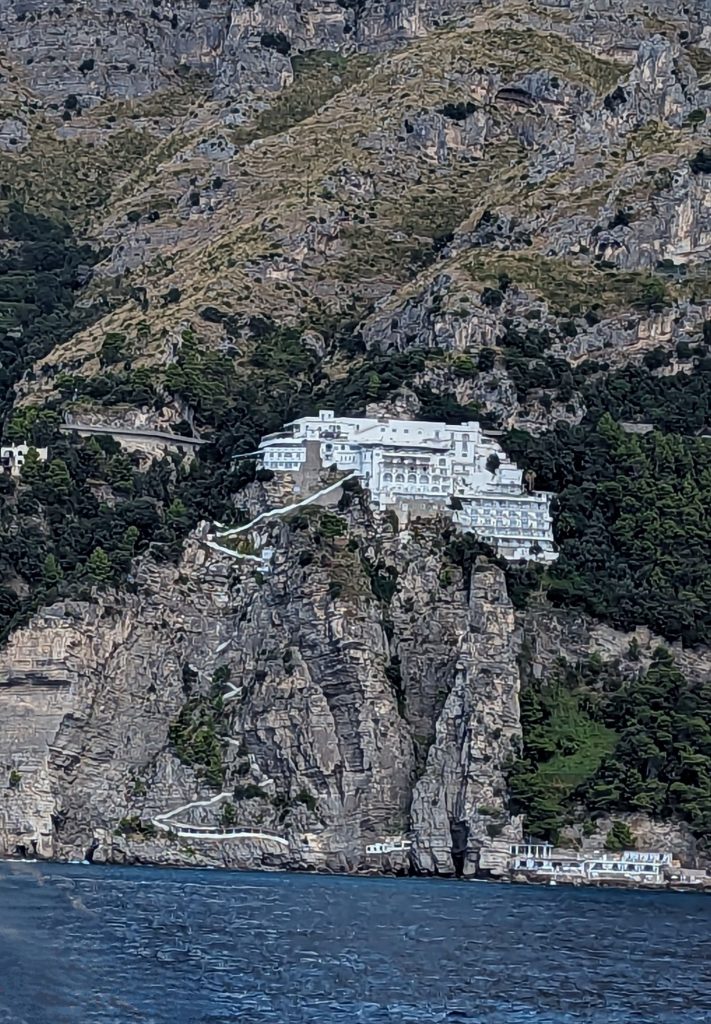
We were wowed by Positano before we even went ashore. Steep cliffs, beautiful and colorful buildings seemingly hanging off the hillside, the huge bay . . . It was all amazing! We had considered sailing here, but the mooring balls were 120 euro per day, which hardly seems worth it. Plus it was faster and more convenient to travel by ferry.
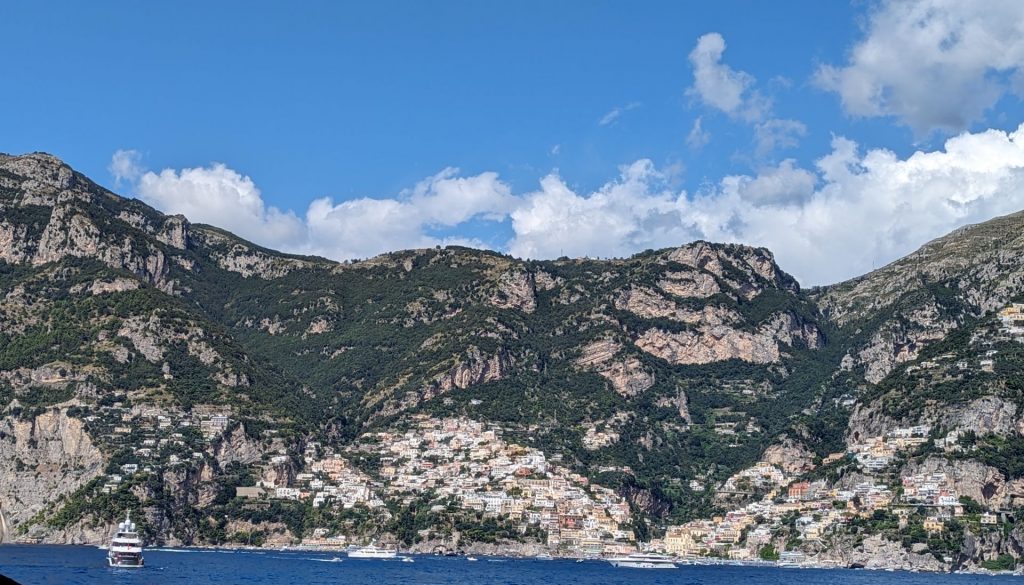
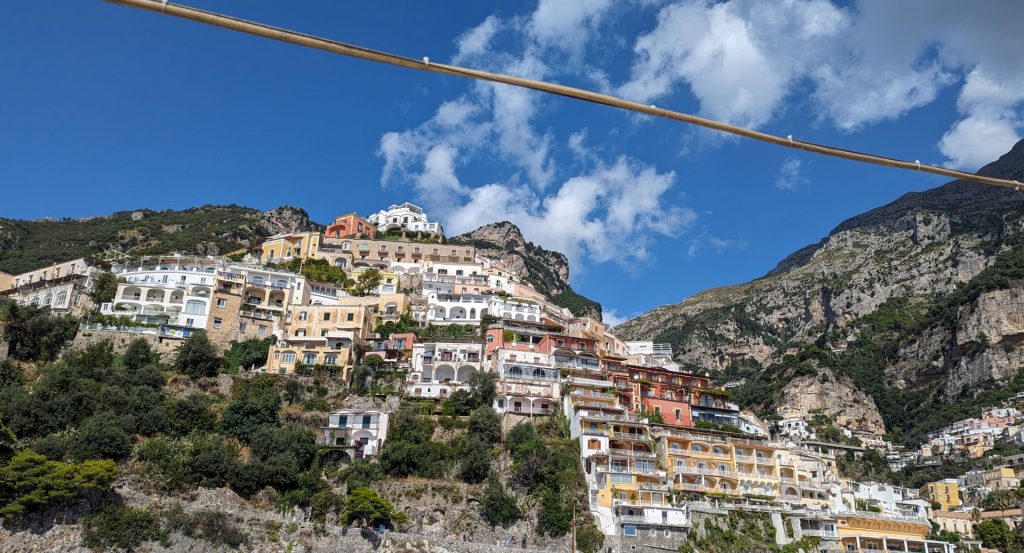
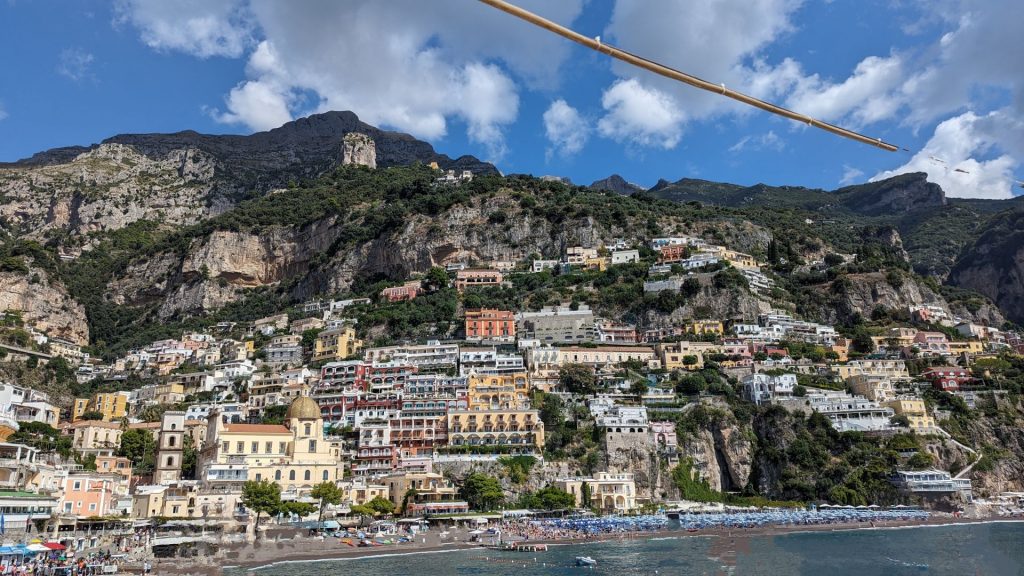
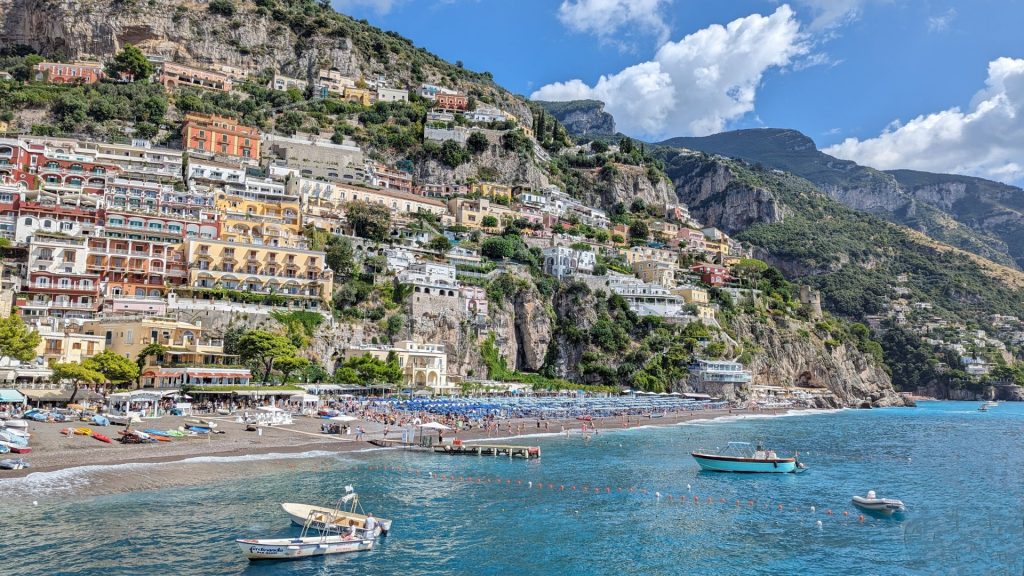
It was already lunch time when we arrived, so Michael Googled restaurants with good reviews. There was one just up ahead to the left. The path to the restaurant was ALSO beautiful!
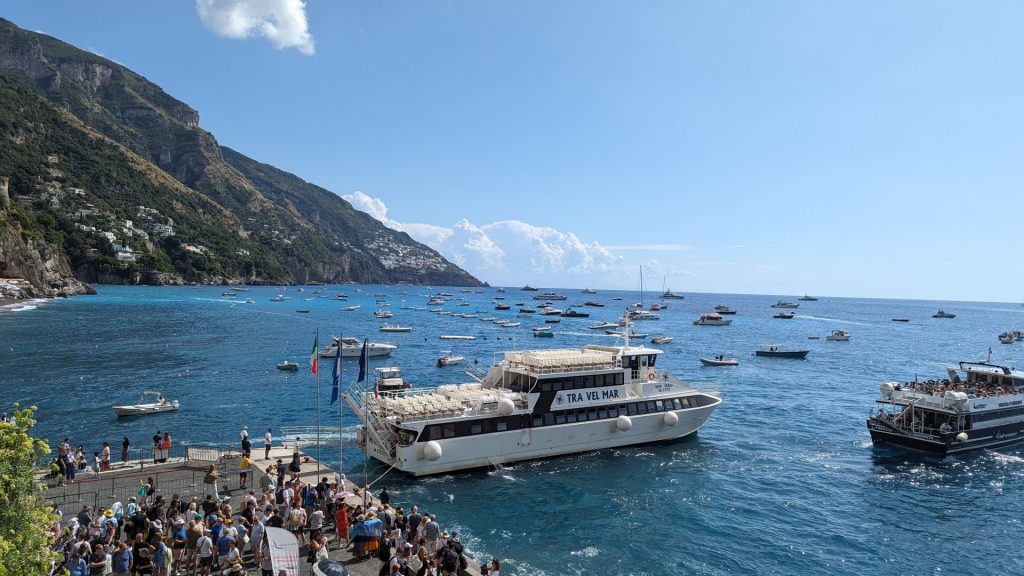
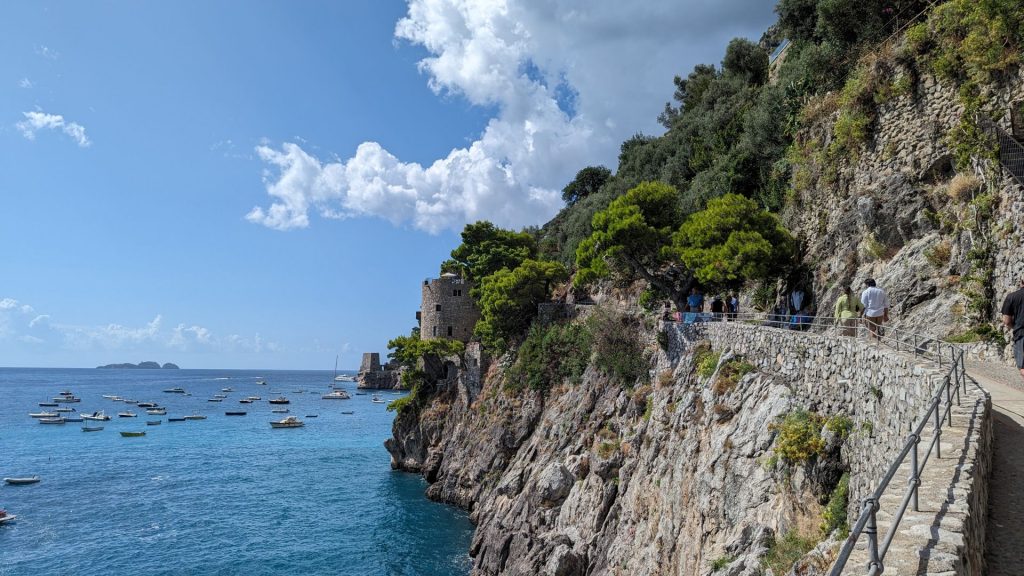
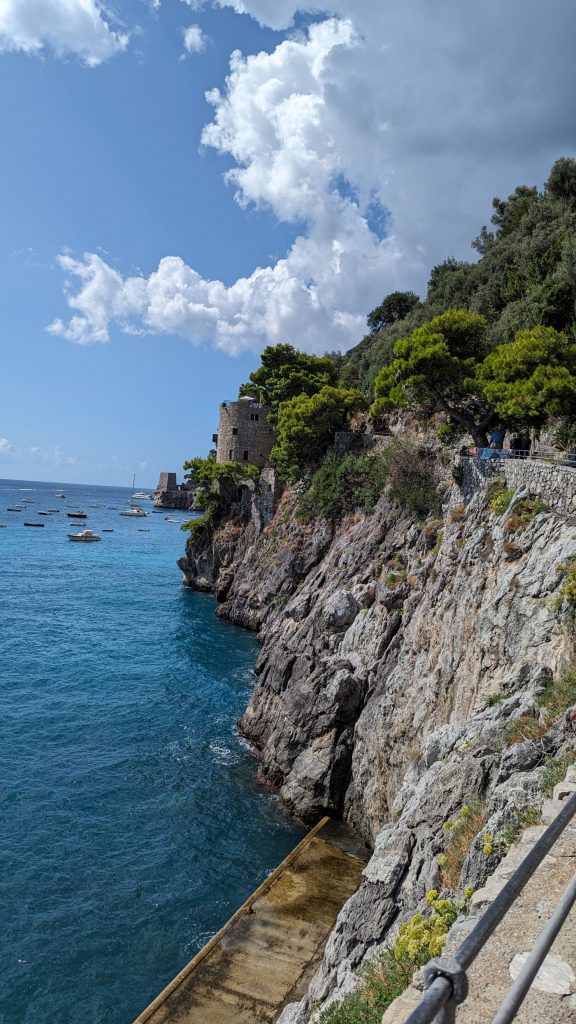
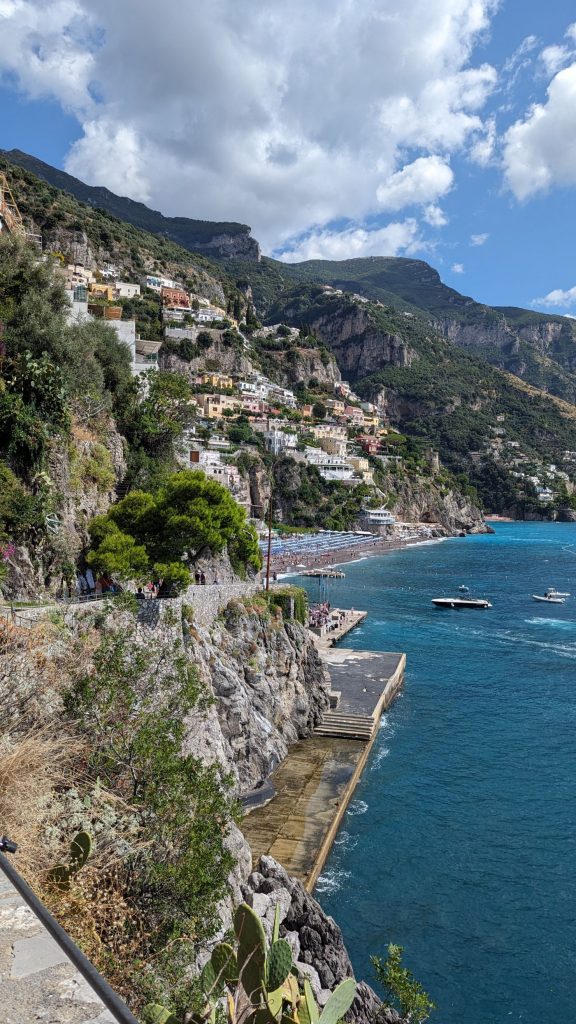
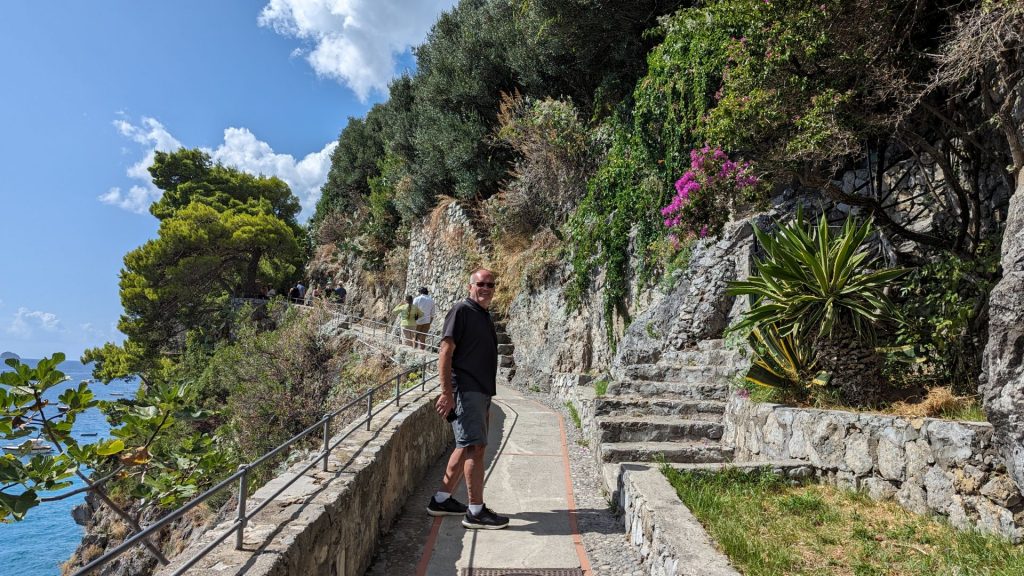
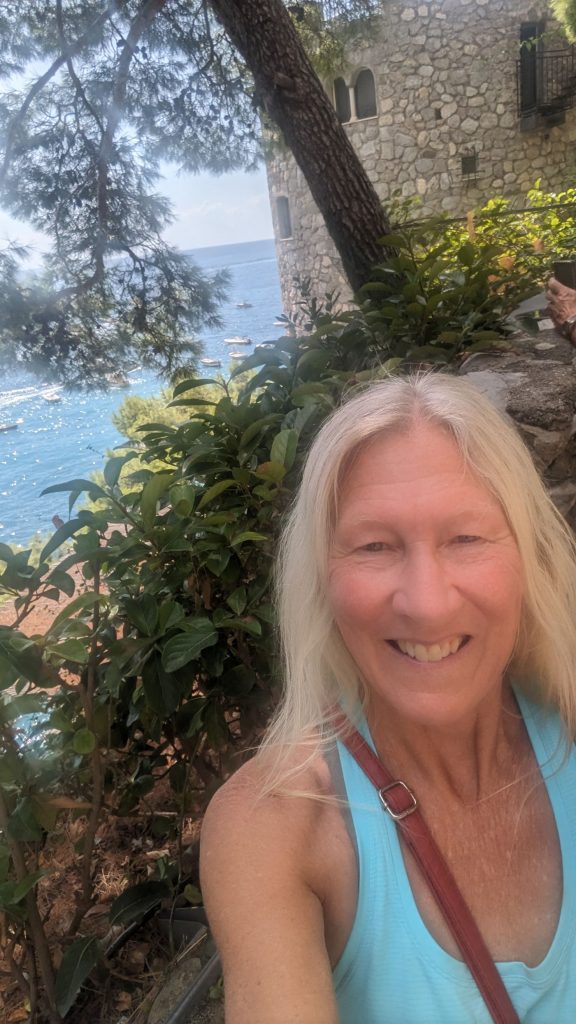
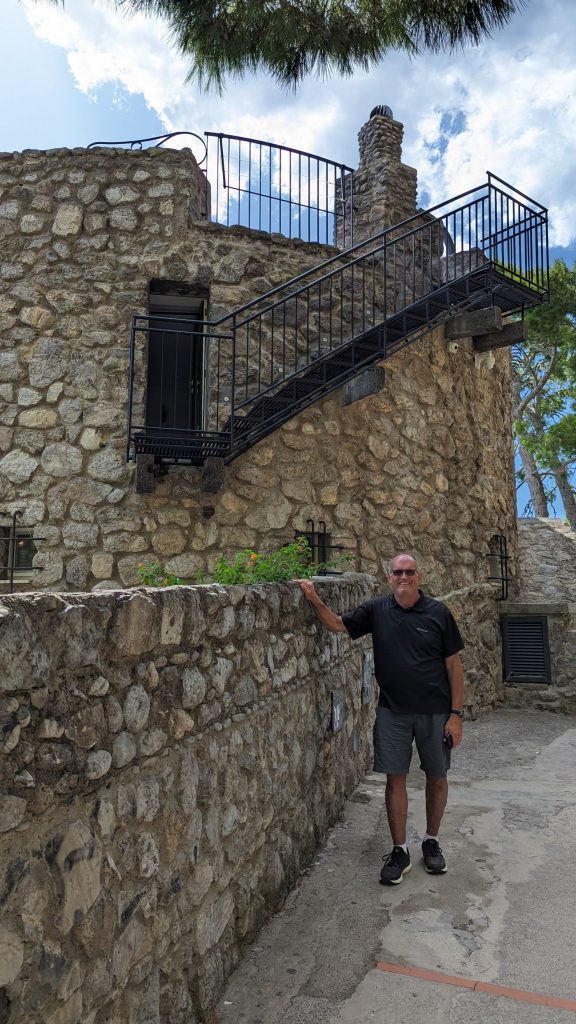
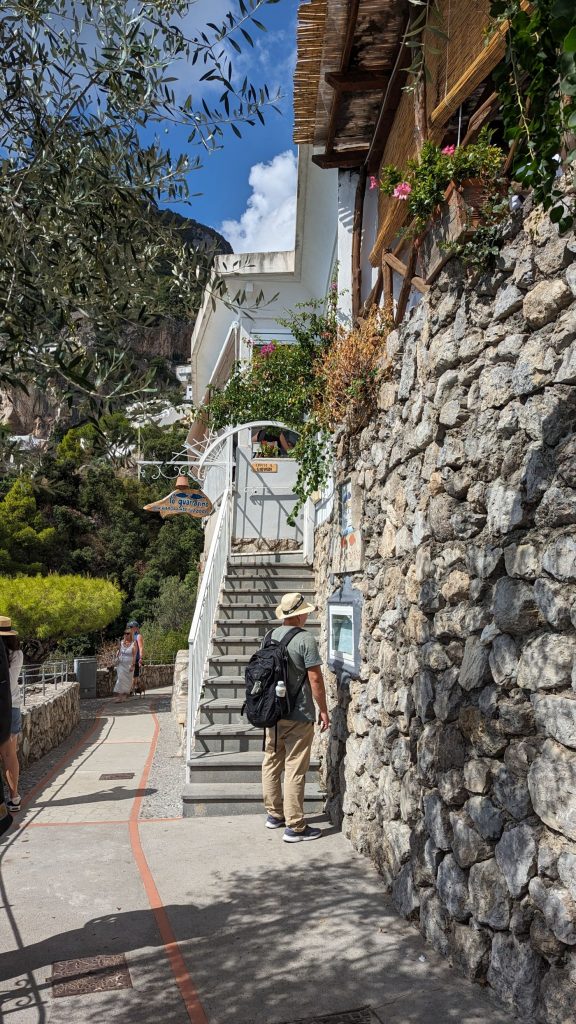
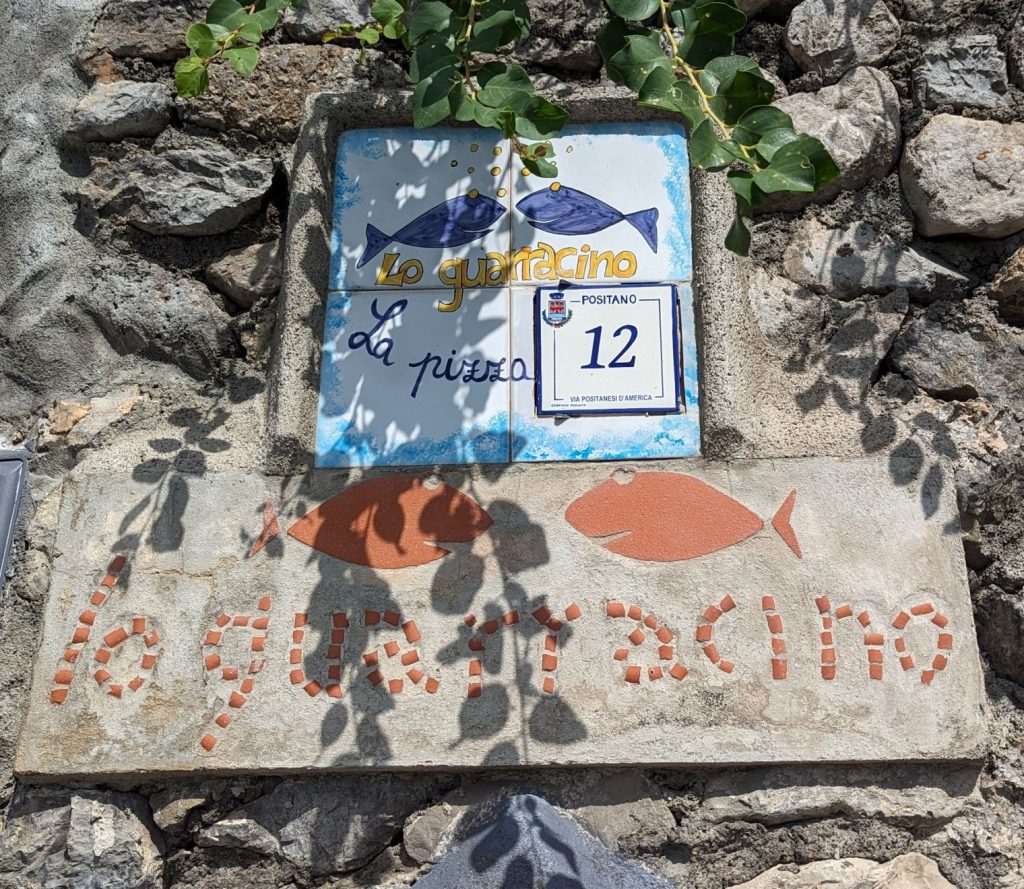
We just managed to beat the crowds, so we were able to sit right by the railing with an unobstructed view of the bay. Here are the views from our seats at the restaurant:
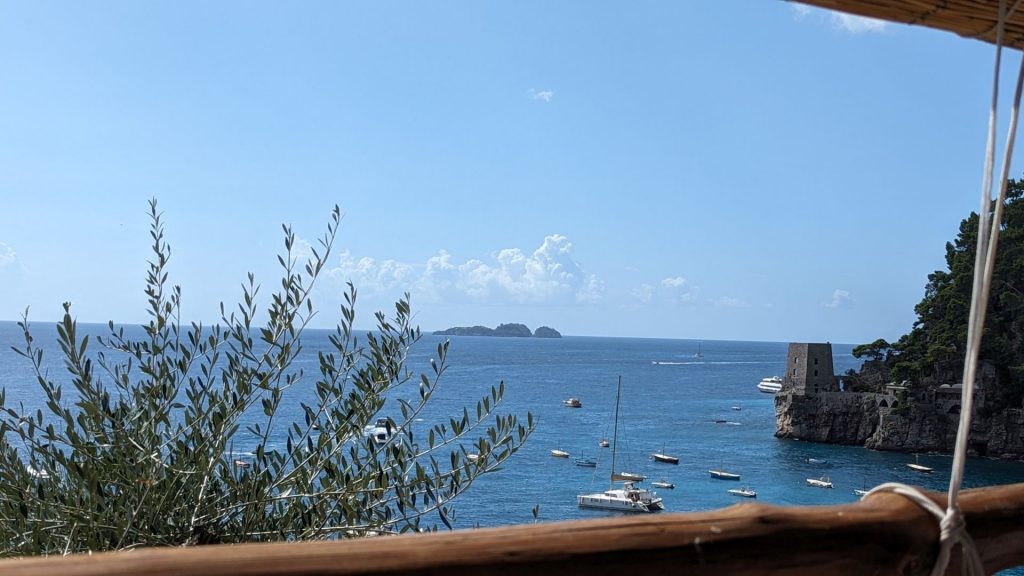
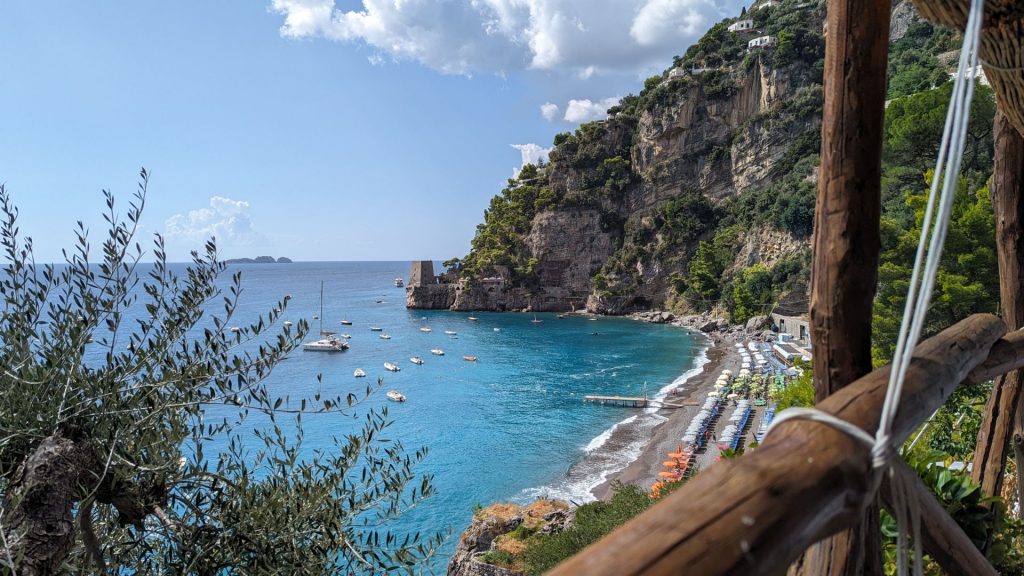
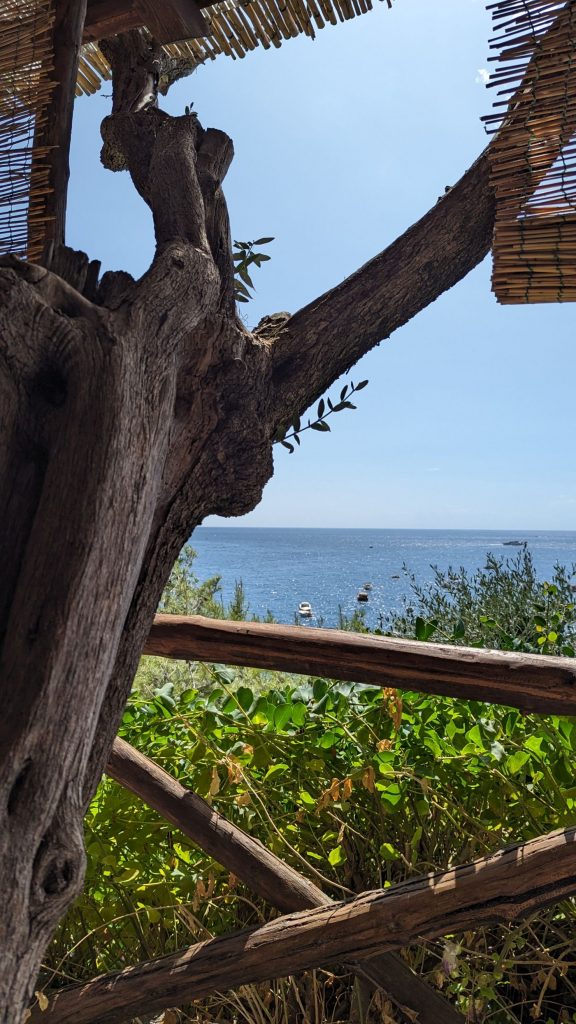
The food was very good! Fish for Michael, pasta for me.
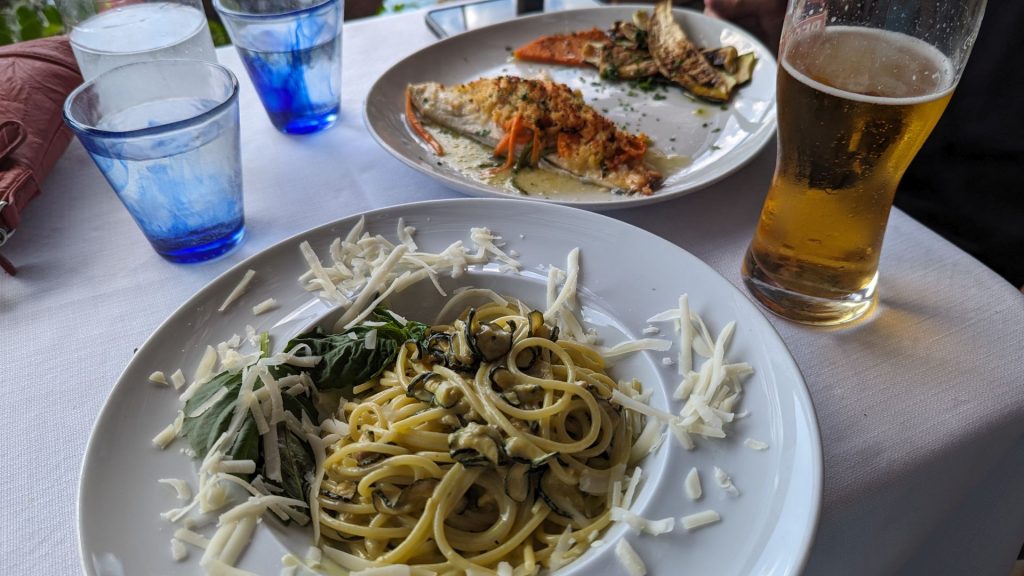
We headed back into town with full bellies.
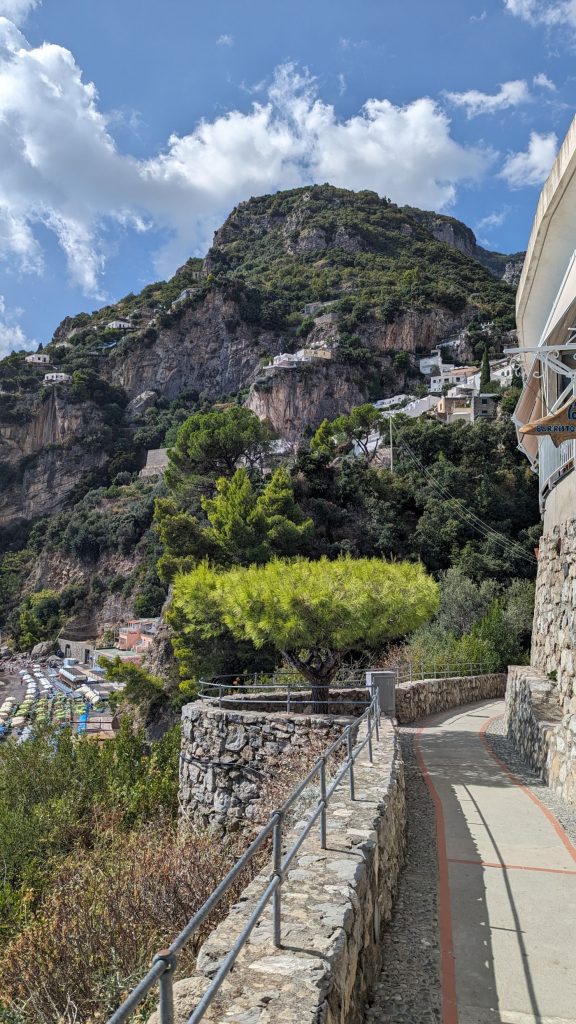
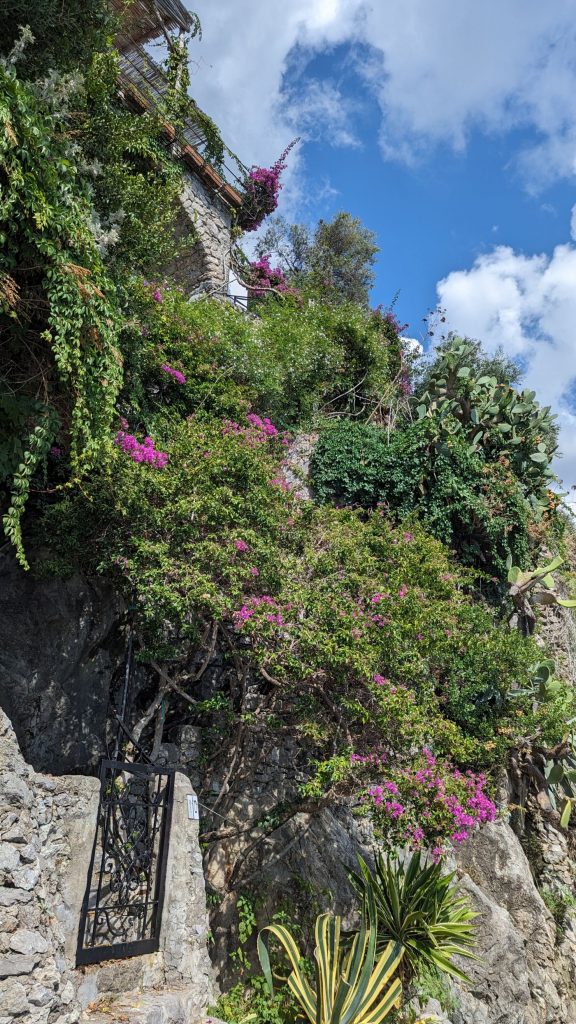
Our first – very short – visit was to the Santa Maria Assunta Church. According to local oral tradition, a Byzantine icon was brought by monks fleeing the raids of Cliento to the place where they would build the new Benedictine monastery. Their icon of the Virgin Mary has been venerated since, and Santa Maria Assunta Church is built as a testimony to that. Here are four pictures of the church, three from the outside:
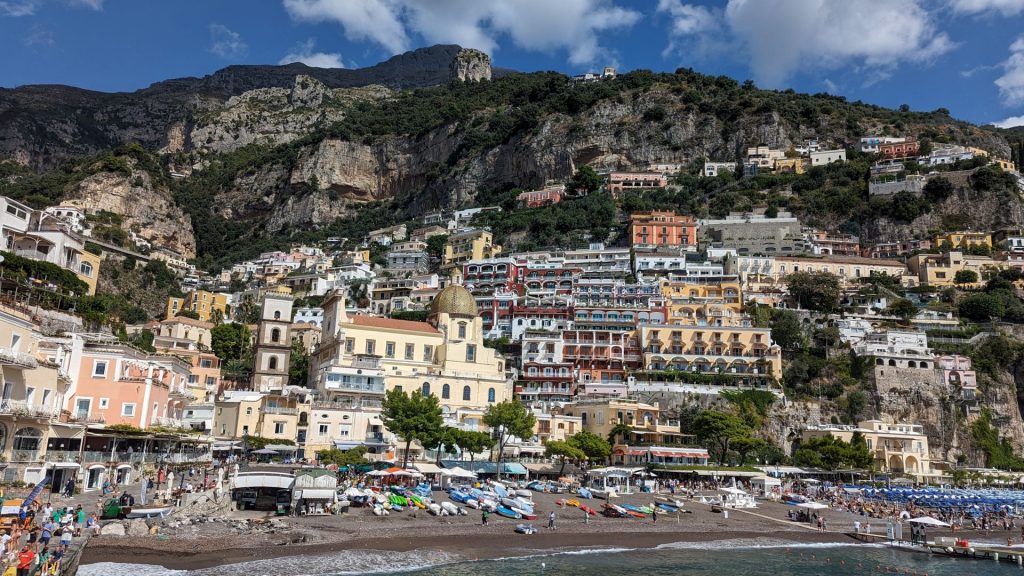
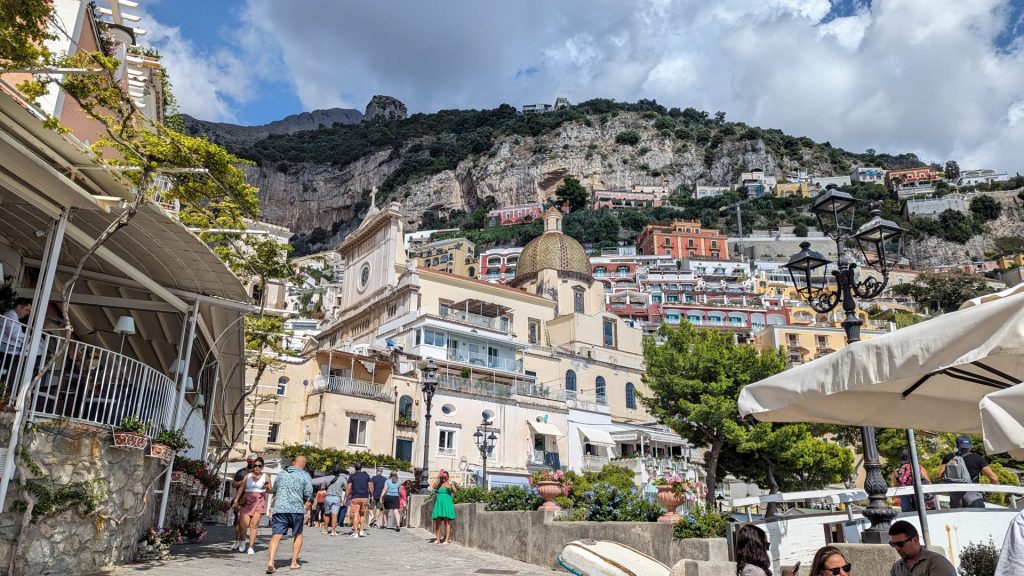
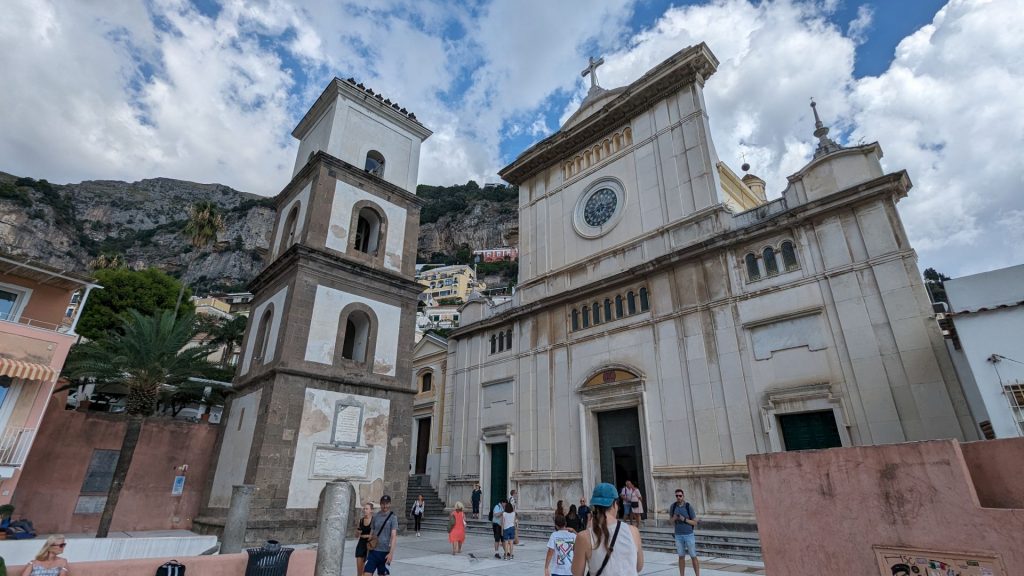
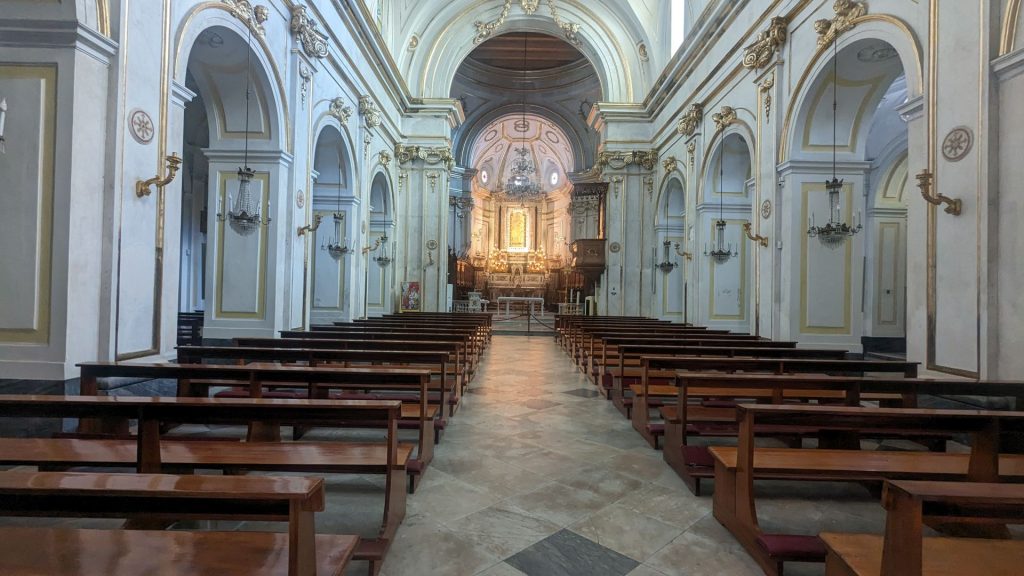
We purchased tickets to the archeology museum and had some time to walk around before it was time to meet our guide. This is a lovely town! Hilly and lovely! It wasn’t quite so filled with tourists, which we appreciated.
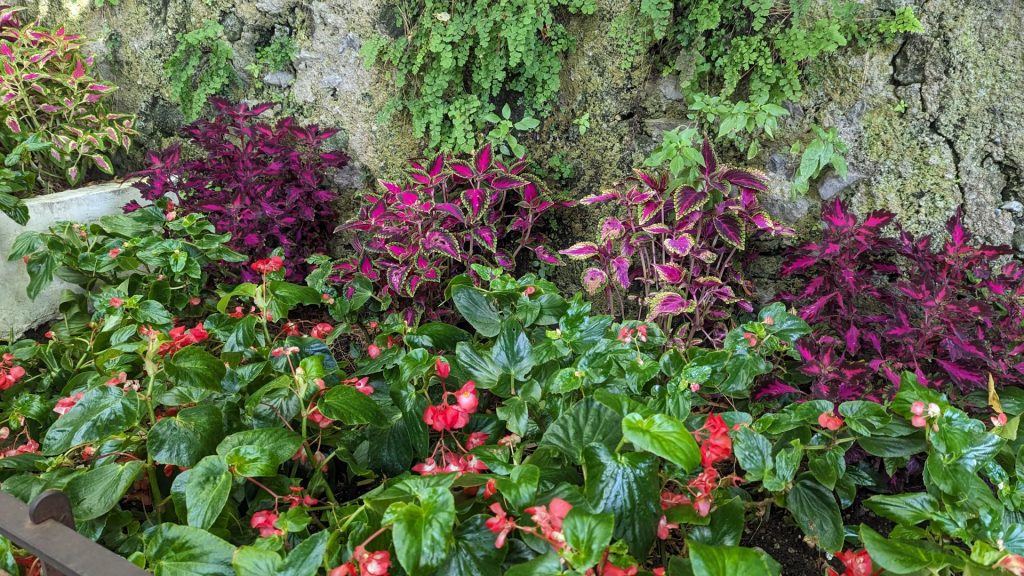
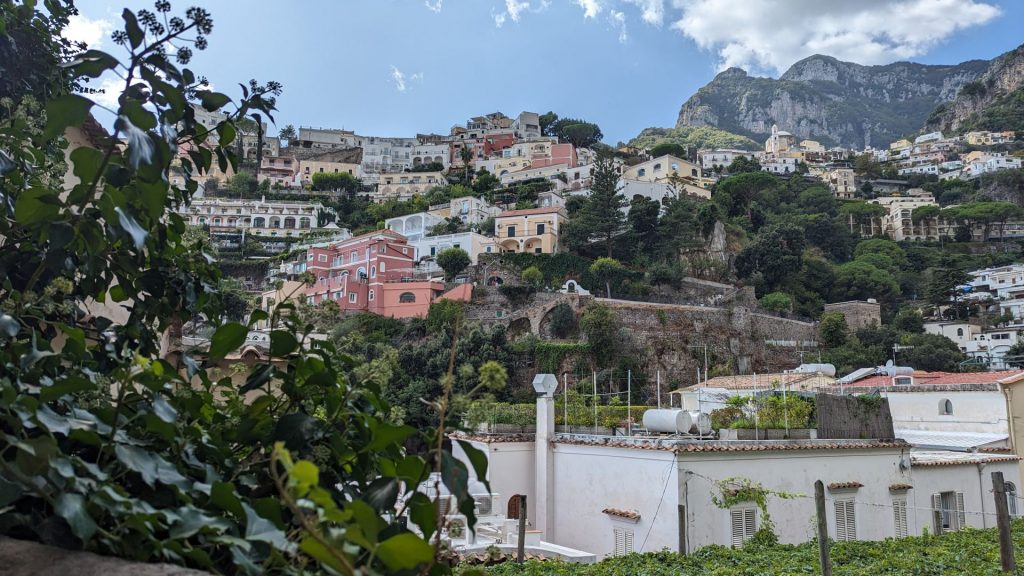
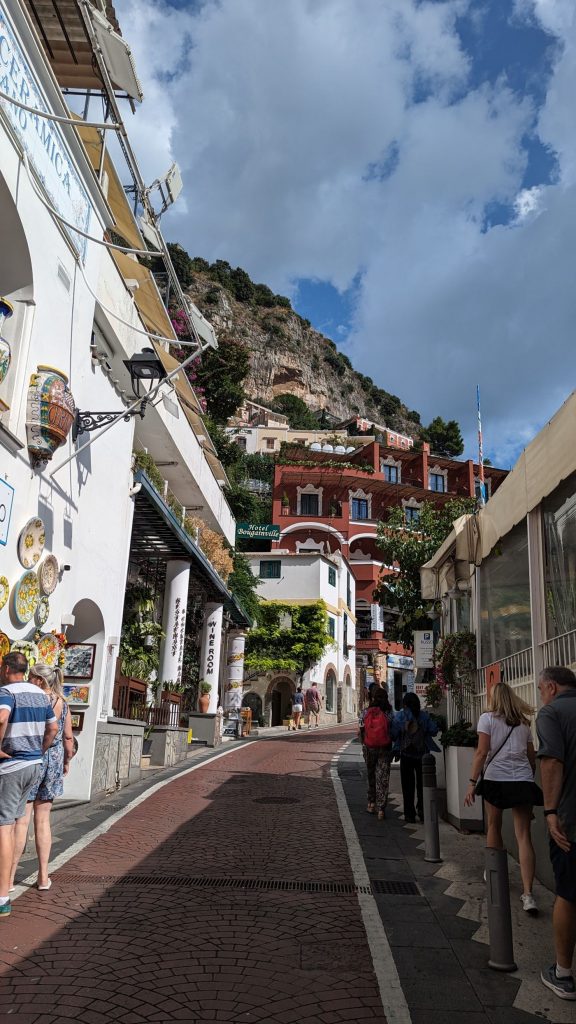
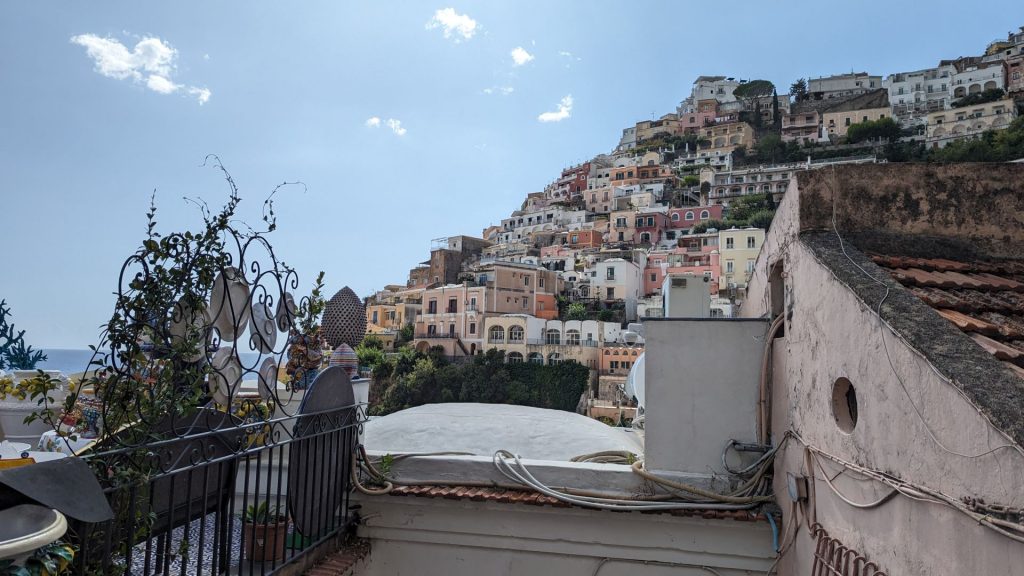
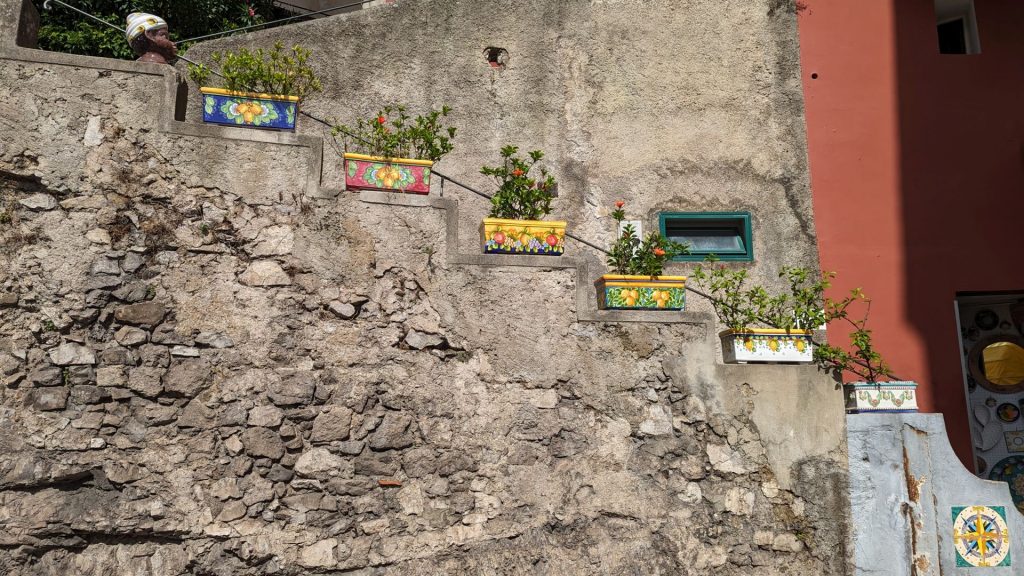
You might have noticed that we don’t talk about shopping opportunities. That is because we don’t really like to shop. But, trust me, there are lots and lots of shops in every town along the Amalfi coast. If you like to shop, you will not be disappointed – especially if you are okay with paying a bit more than you might have expected or wanted.
It was time to meet our guide to the Archeology Museum-MAR. What is MAR? It is an ancient Roman villa located in the center of Positano, which also functions as an archaeology museum. It reveals Positano to be a melting pot of art and culture and tells of its significance over the centuries.
Michael took the opportunity to relax in this artistic chair while we waited for the guide.
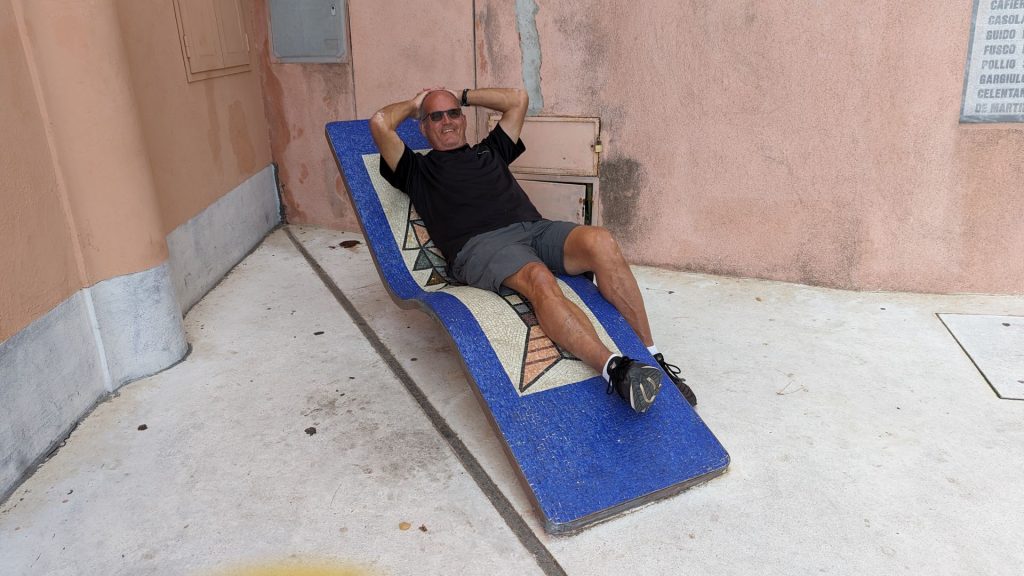
Villa Romana
The greatness of the Amalfi Coast with its wonders was appreciated by the Romans as early as the 1st century B.C. They began to build majestic villas here in which to spend their moments of relaxation. When Vesuvius erupted in August 79 AD, the Amalfi Coast was not spared the destruction that rained down on Pompeii and Herculaneum. Molten rock, pumice and hot ash was thrown up to 21 miles into the air, more than enough to clear the barrier of the Monti Lattari, and due to the prevailing winds, Positano was covered in several meters of volcanic detritus. The villa was buried eleven meters underground. As if that wasn’t enough, the torrential rains which followed the eruption led to mudslides all along the coast, which finished the destructive work of the pumice dump. The east wall of the triclinium bears eloquent witness to the destructive forces unleashed: it fractured under the weight of the mudslide, so that the mural pattern on the bottom of the wall and that at the top no longer line up.
Ironically, at the time of the eruption, the villa was being renovated after having been damaged in the severe earthquake of 62 AD. It was a chance for the owners to redo their swanky seaside property in the latest fashion, which art historians today call the Pompeiian fourth style. A pair of lead cistae used as builders’ buckets, the blades of a spade and a hoe, an iron carpenter’s saw, and remains of the scaffolding that covered the outside of the villa have all been found here, and put on display, alongside items of domesticity like a fat-bellied bronze pitcher, two oval frying pans fused together by the heat of the pumice rain, and a bronze-handled stone weight the size of a small watermelon.
The villa is considered the most important archaeological discovery in southern Italy in recent decades.
The villa was discovered by chance in 2003 during restoration work in the Santa Maria Assunta Church’s crypt, even though its existence had been known for some time. In the second half of the 18th century, a Bourbon excavator named Karl Weber described the remains of a building with frescoes and mosaics beneath the church. According to some experts the villa belonged to the freedman Posides Claudi Caesari, from whom the name Positano might derive, but this is not accepted as fact.
The most astonishing and beautiful features of the villa, in my opinion, are the Pompeian-style frescoes, even more so than the mosaics. The triclinium, a room of about thirty-five square meters, was used by the ancient Romans to serve lunch. The walls are five meters high, and it is on them that you can admire all the beauty of the frescoes kept intact to the point of thinking that time has stopped.
The colors that stand out from these frescoes are blue, yellow, red, and green, images with three-dimensional stucco representing peacocks, sea snakes, cupids, and birds. The frescoes that have remained intact in this way highlight all their artistic quality, and the use of Egyptian blue, considered at the time a difficult color to mix, allows us to understand the wealth of the owners of the villa of the time and the splendor of Roman life.
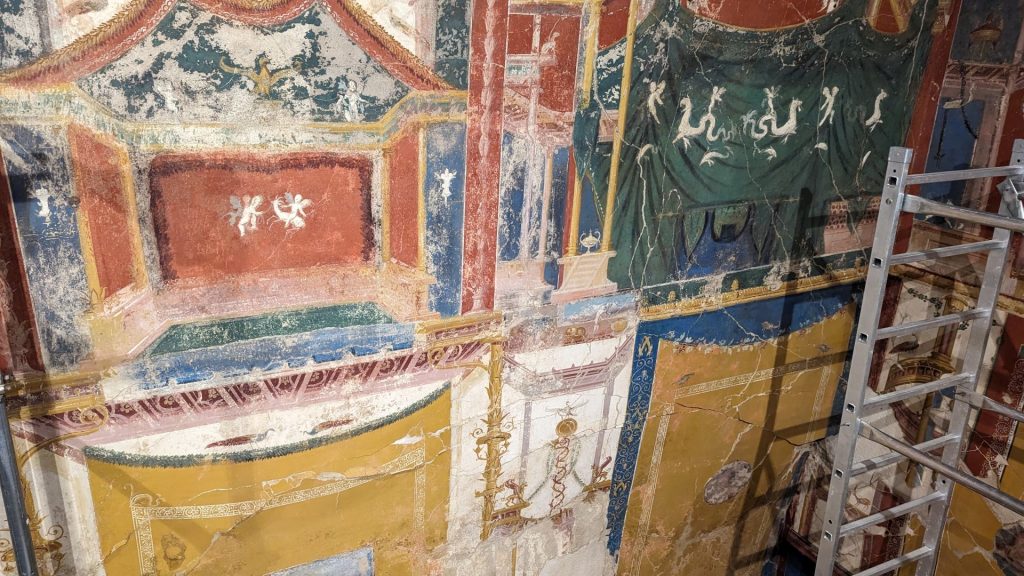
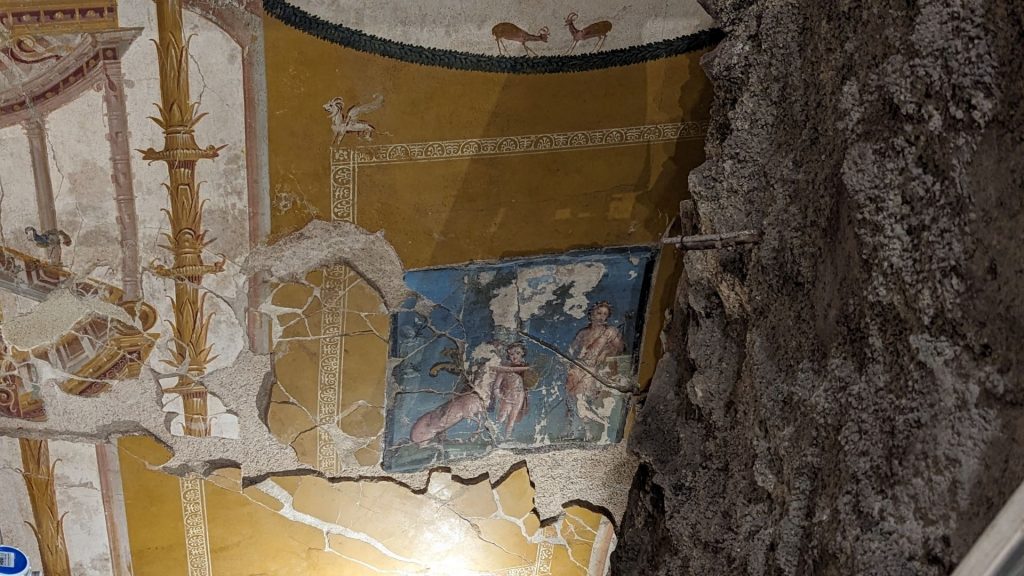
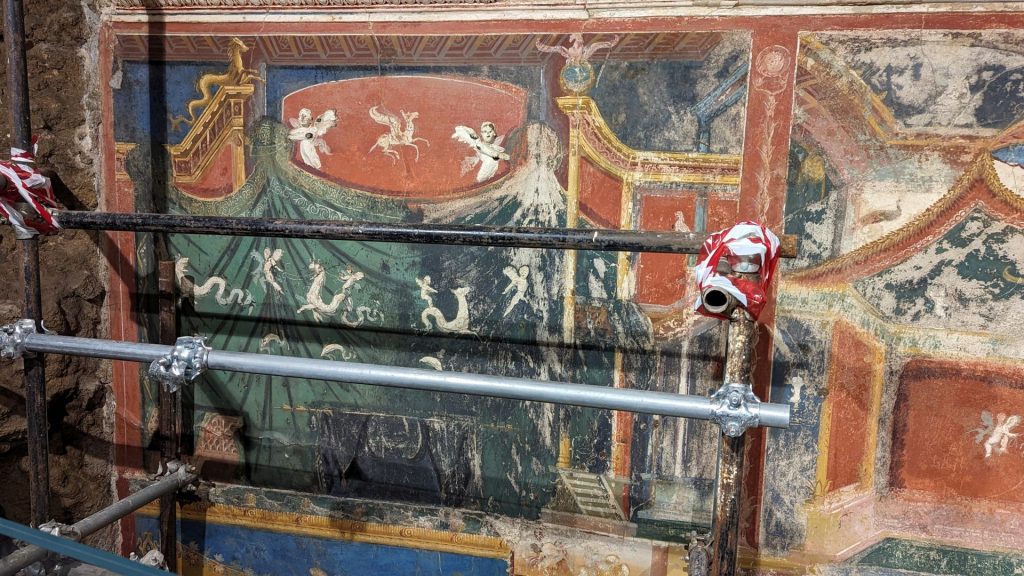
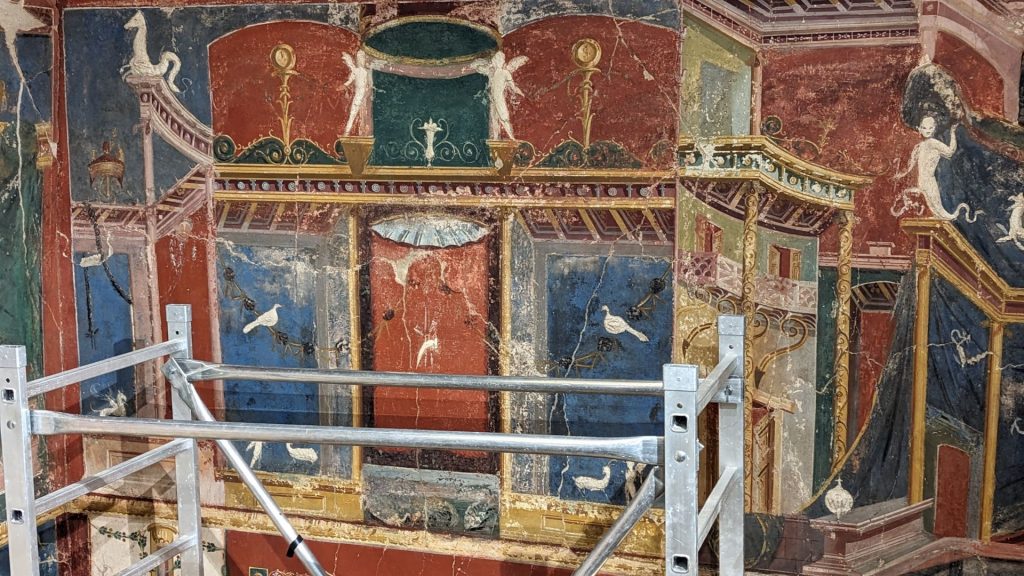
The Upper Crypt
Along the perimeter of the main hall – under which remains of the Roman Villa have been discovered – and on the walls of the passageways, there are 69 lined brick seats used to desiccate the dead, of beautiful craftsmanship in their plastic finishing of the stuccoes lightly coated, there is no comparison in the whole Amalfi territory. (These seats were called seat-drips. When a person died, their body was placed in a sitting position on a stone chair with a hole in it and left to mummify. The bodies slowly decomposed, and the liquids were collected in special vessels located under the seats. The skeletons were later collected.) The backgrounds of the walls seem to be covered by a light veil of white lime on which one can see swift red color brushstrokes that form oblique parallel bands and rhombs in the intrados.
The upper crypt also contains skeletal parts and objects of everyday life, including those of a religious nature, that were discovered during the excavation.
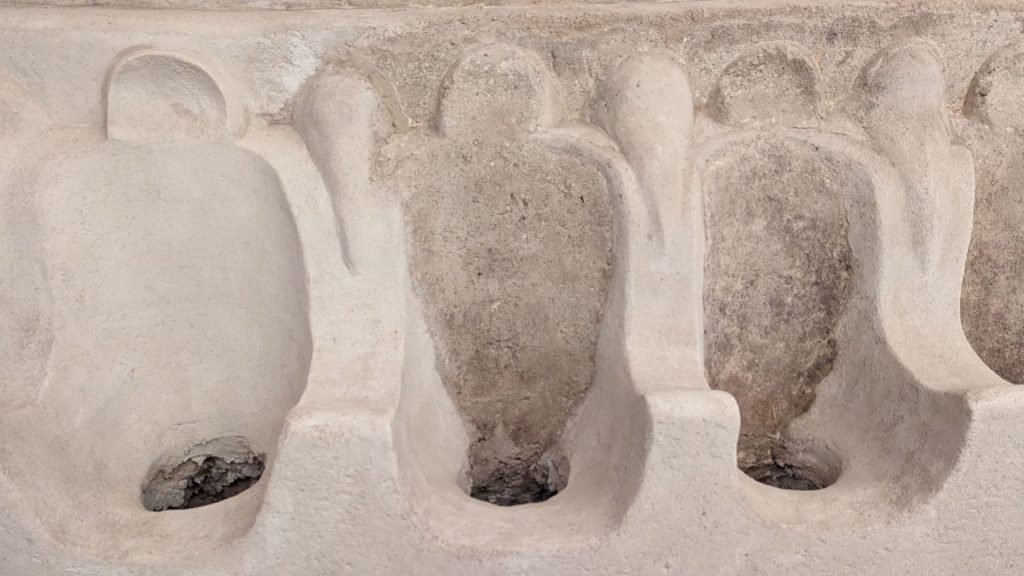
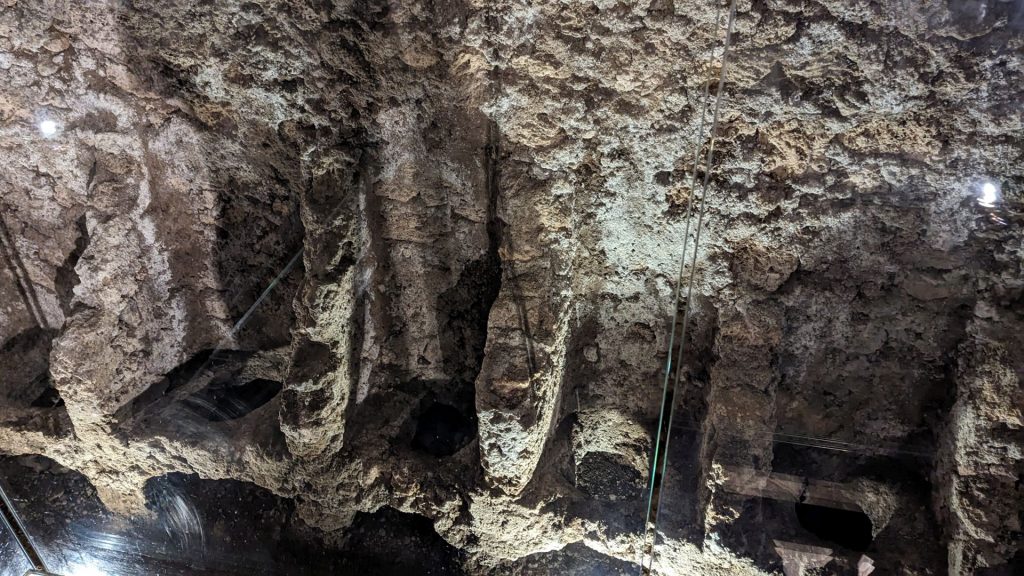
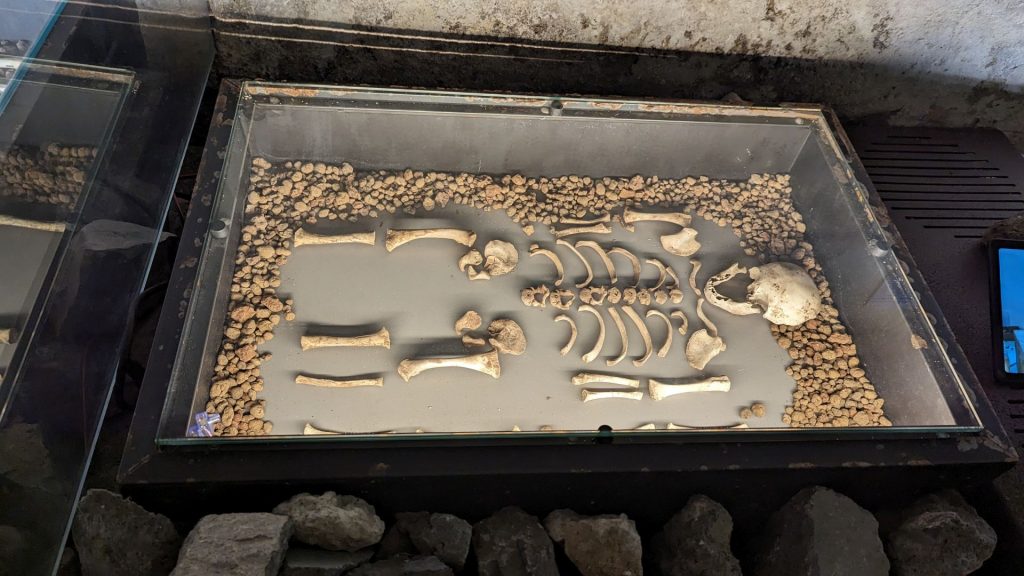
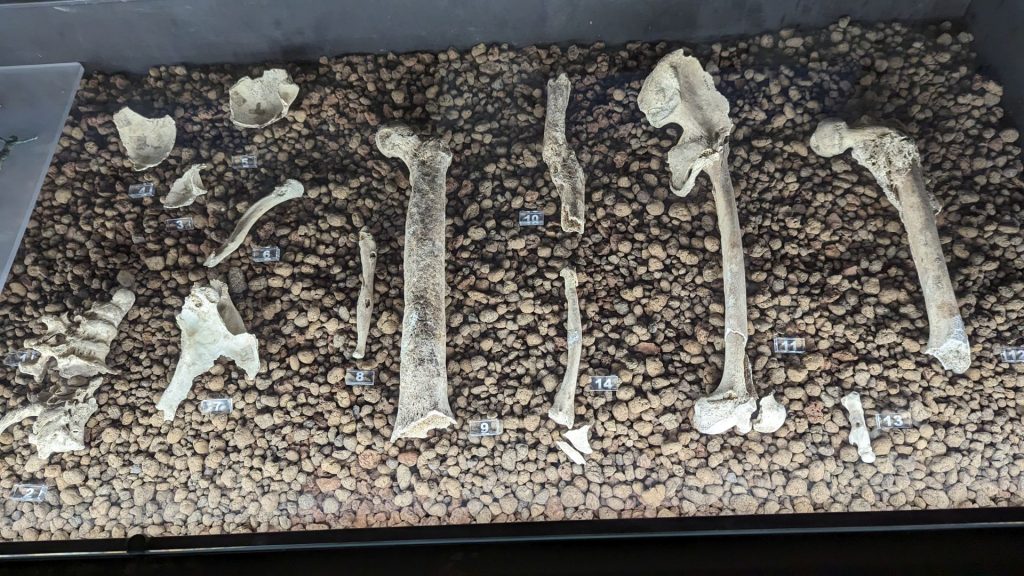
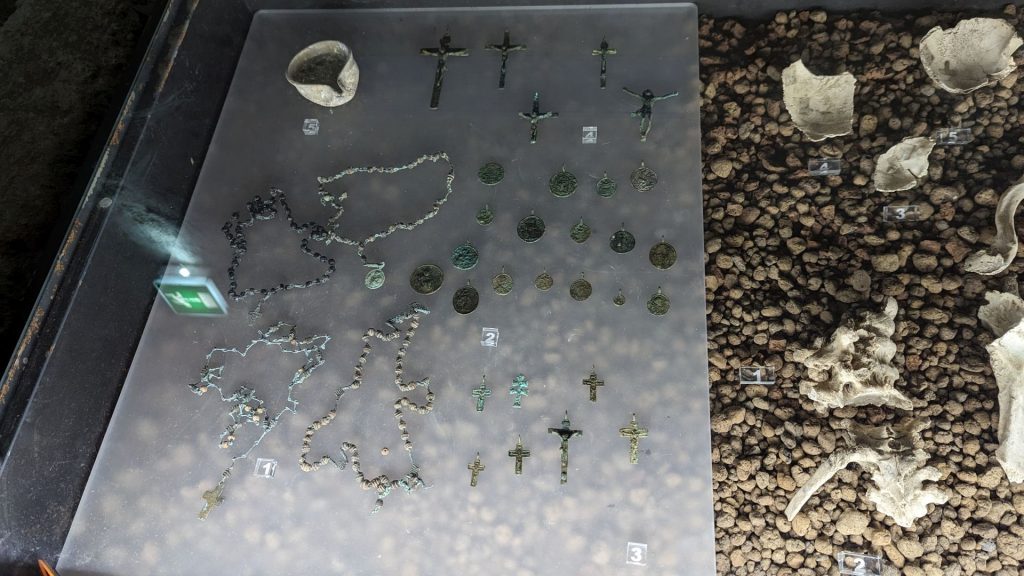
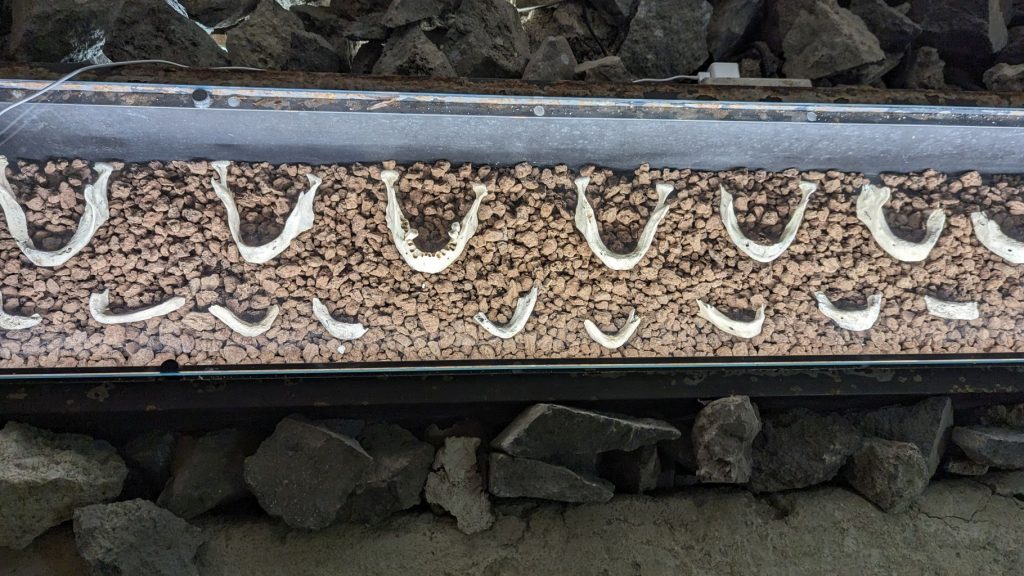
The Medieval Crypt
A few steps from the Upper Crypt is the Medieval Crypt. In ancient times, It is still not quite clear for what purpose the sacred environment was used. It is located right under the presbytery of the Upper church dedicated to the Virgin Mary in 1159. The many transformations that the structure underwent in the passing of centuries prevent us from ascertaining if it actually was a Church, or if it functioned as a crypt for the overtop building. The main body has two naves, covered by barrel vaults and separated by arches.
The eastern wall of the hall has an apse covered by two small cross vaults in which one can still trace pieces of molded stucco that look like the rocks: such peculiarity marks the preexistence of an altar – mentioned many times in documents dedicated to the Nativity.
Later the apse space was limited, compared to the naves, by a division wall; inside seated funeral drains were built while, among the above cross vaults, an opening was created (that corresponds to where today’s main Church altar is placed) through which the dead bodies were lowered down. This makes us assume that following the 17th century works, the crypt had lost its early liturgical purpose and since then it exclusively carries out a cemeterial function.
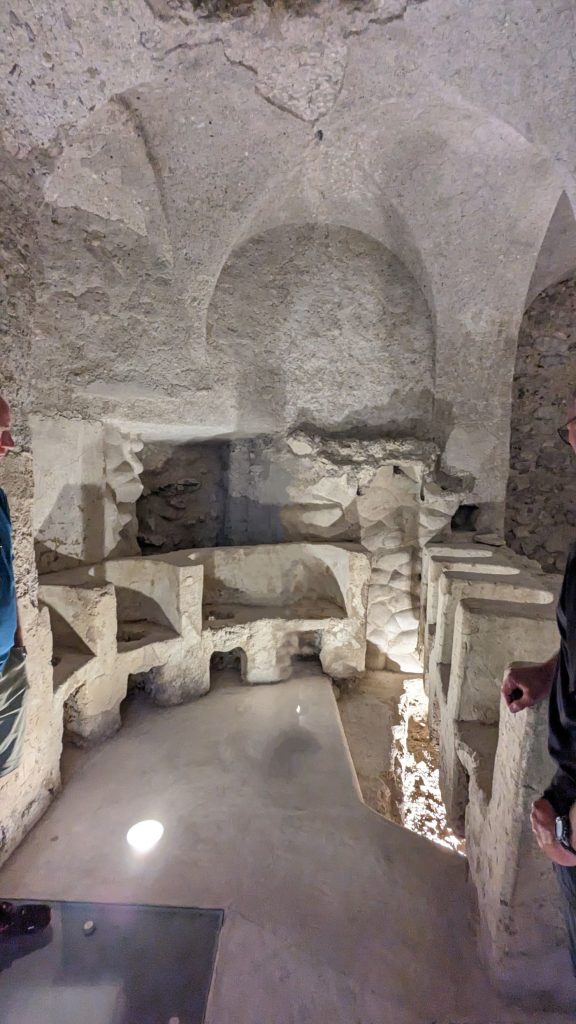
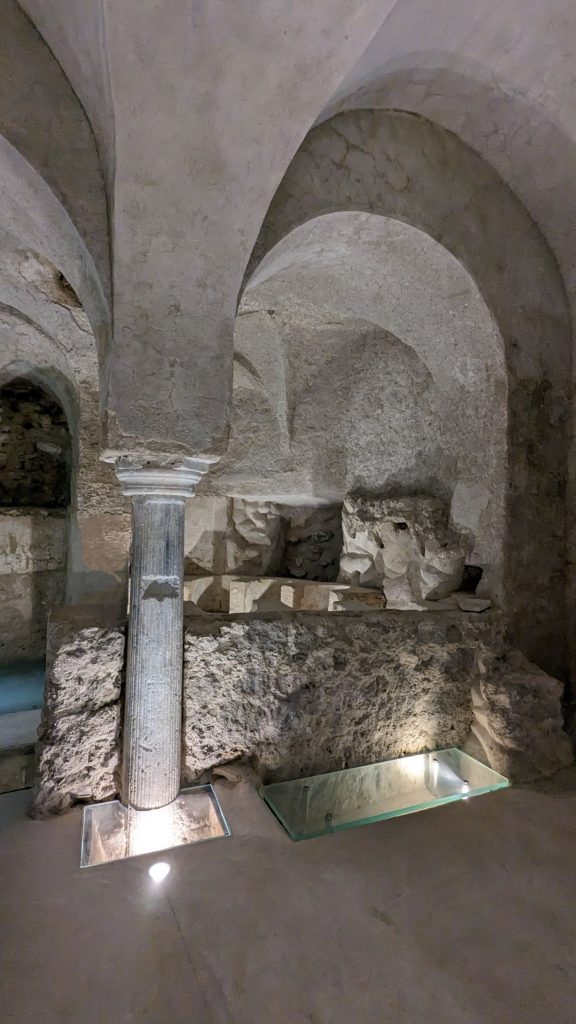
Yeah, we don’t want to end this post on a “cemeterial function” note, so let’s talk about what we did next.
It was starting to rain when we left MAR. Because “everyone” seemed to be taking shelter, we had a difficult time finding an open table at a restaurant. When we found one, the gentleman sitting next to us told us that this table was for “take out,” and that we could go to the bar to order drinks and ice cream and bring it back to the table. Further, it was much cheaper to do it that way. So we did! Michael had ice cream and I had a beer. And, sure enough, the ice cream did not cost 15 euros, as it had in Amalfi.
We sat and chatted with the (now) couple – his new bride had joined him, and with a couple of other guys who used the table to eat their pizza. We were wearing shorts and short sleeved shirts and had not brought an umbrella or rain gear, so we were hoping that the rain would stop in time for us to catch the ferry. It did slow down and eventually stopped by the time the ferry arrived.
And the clouds eventually transformed from a menacing shade of gray to a friendly shade of orange.
